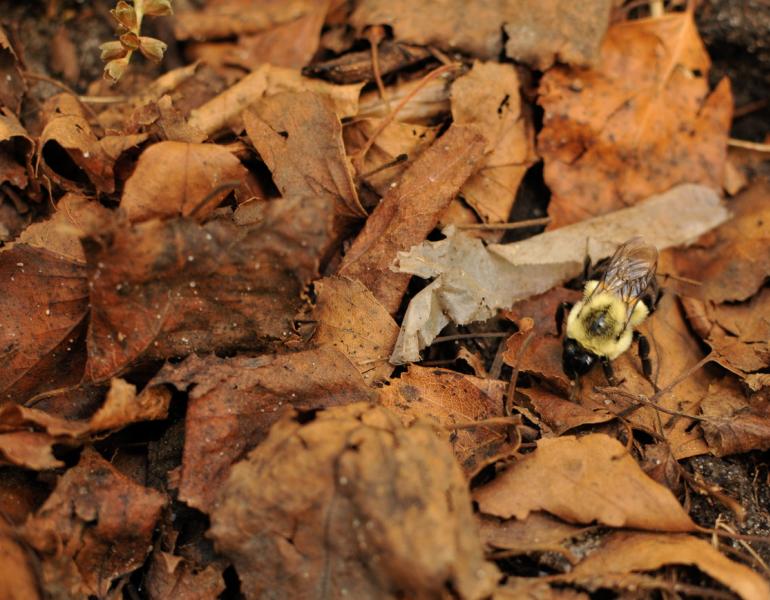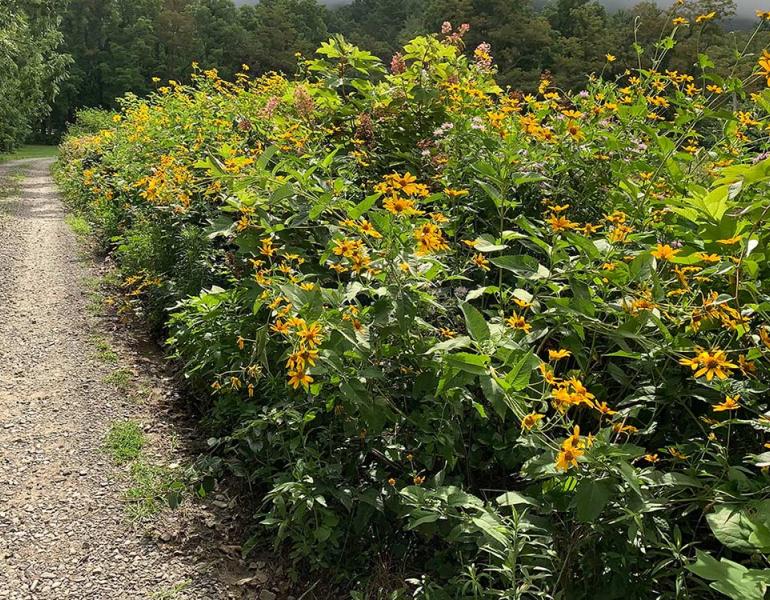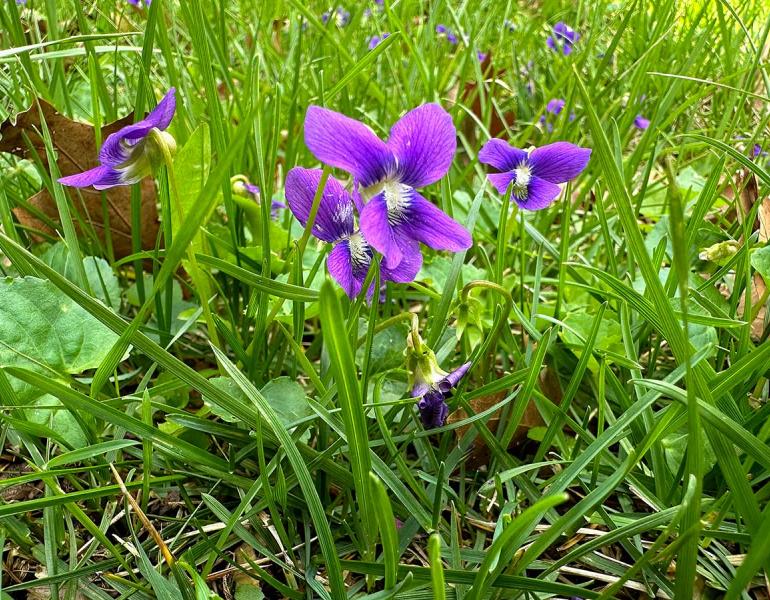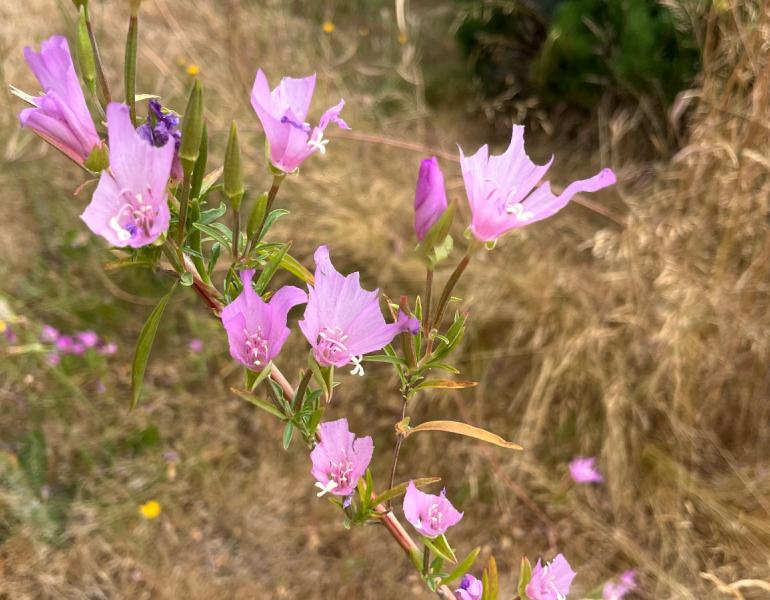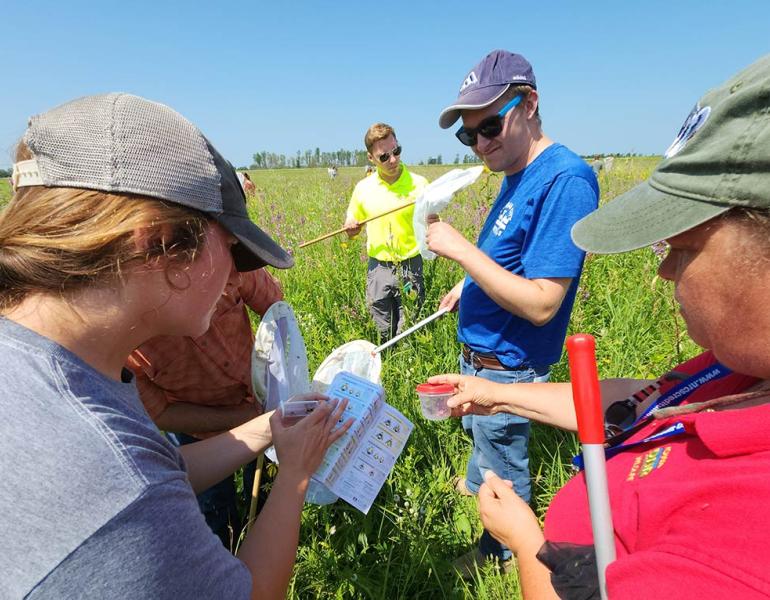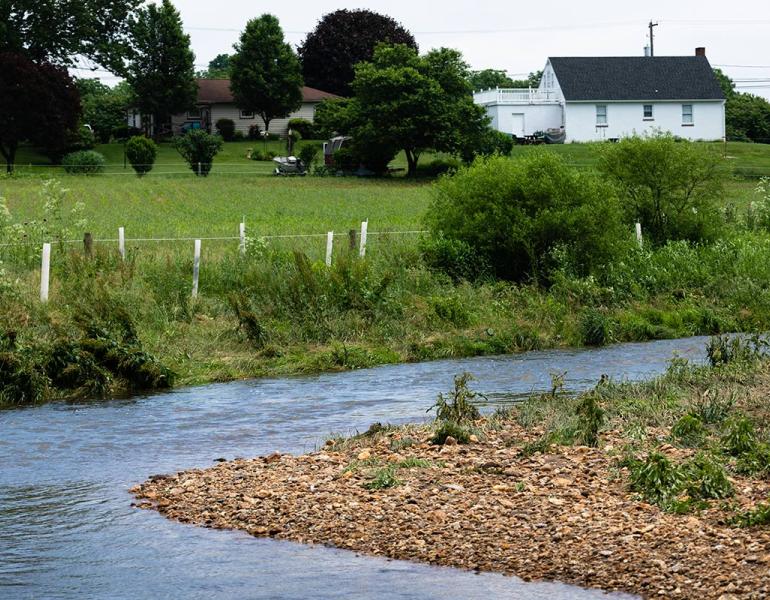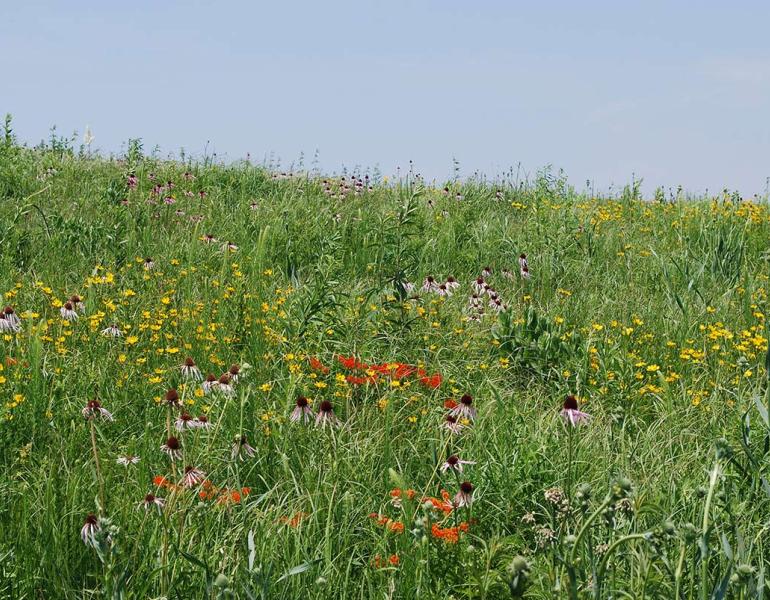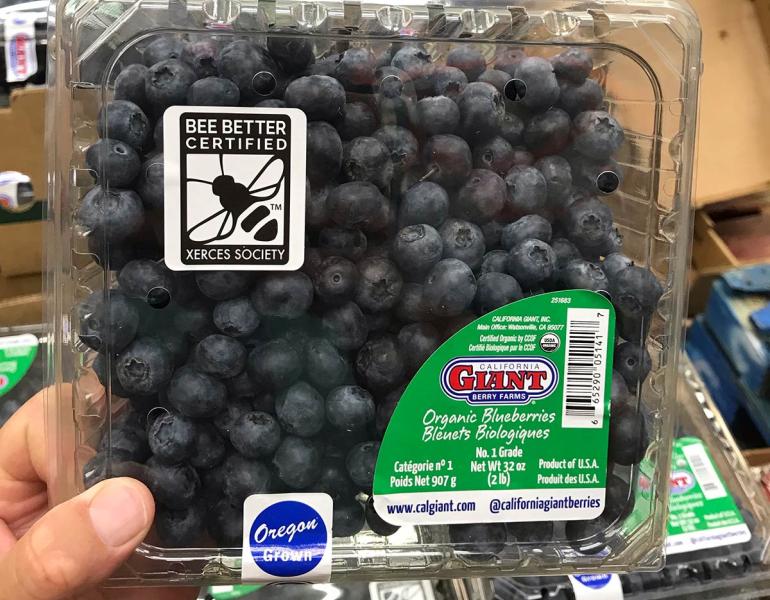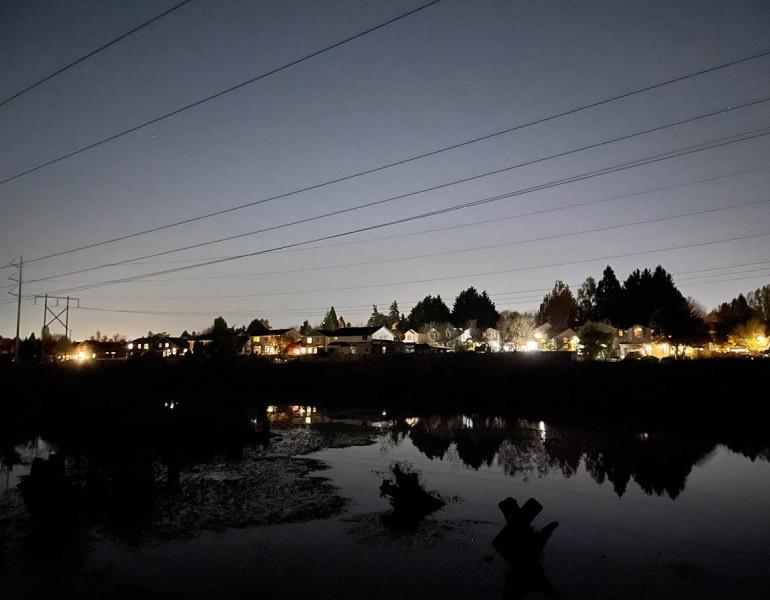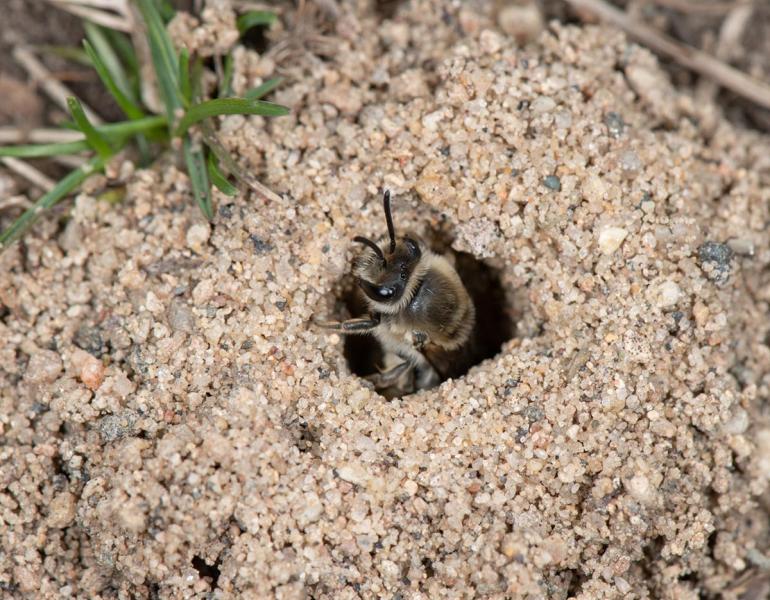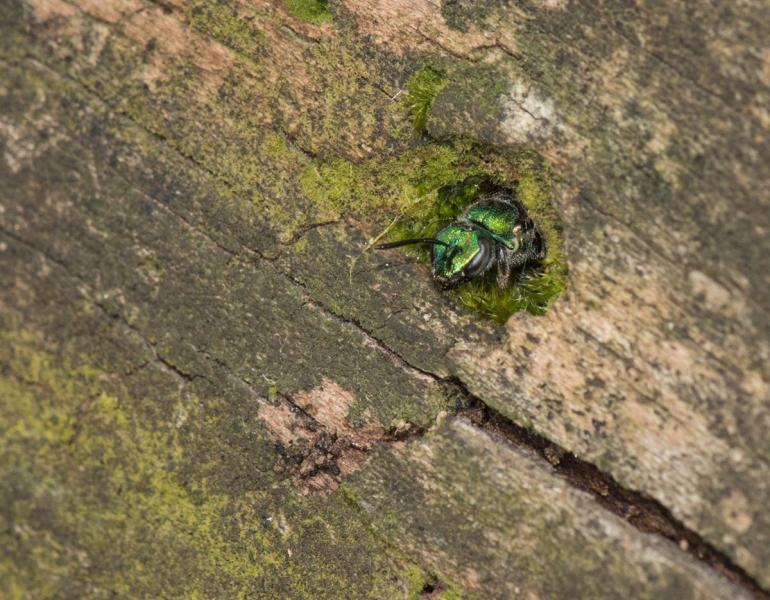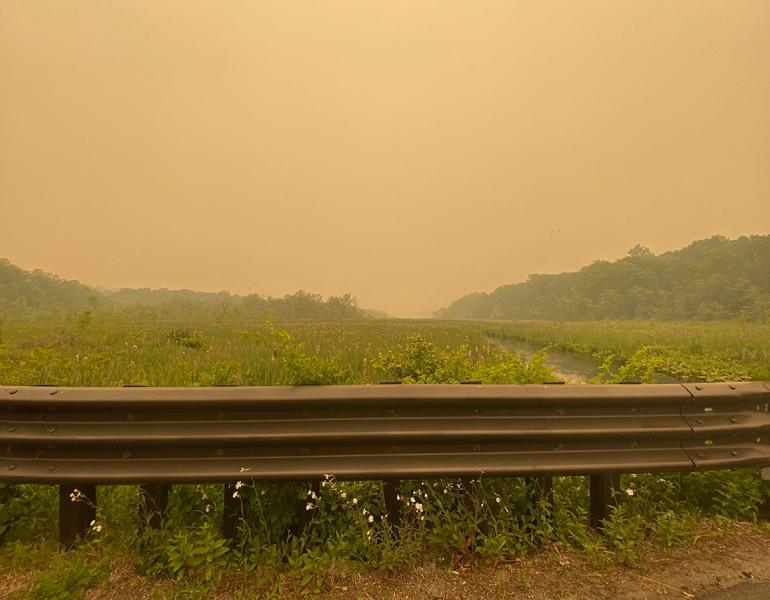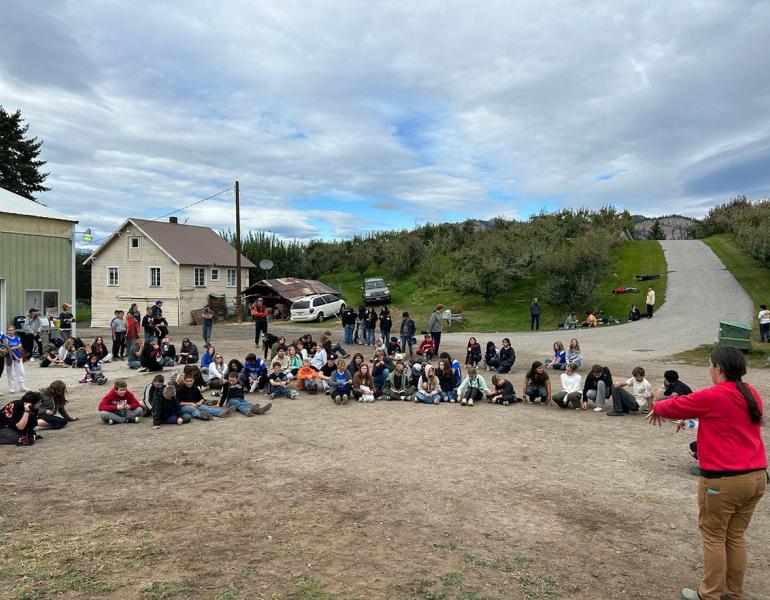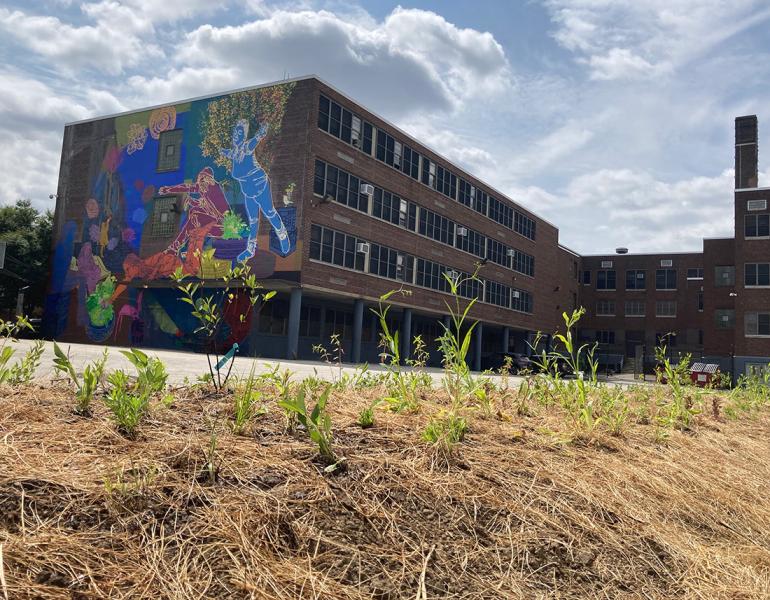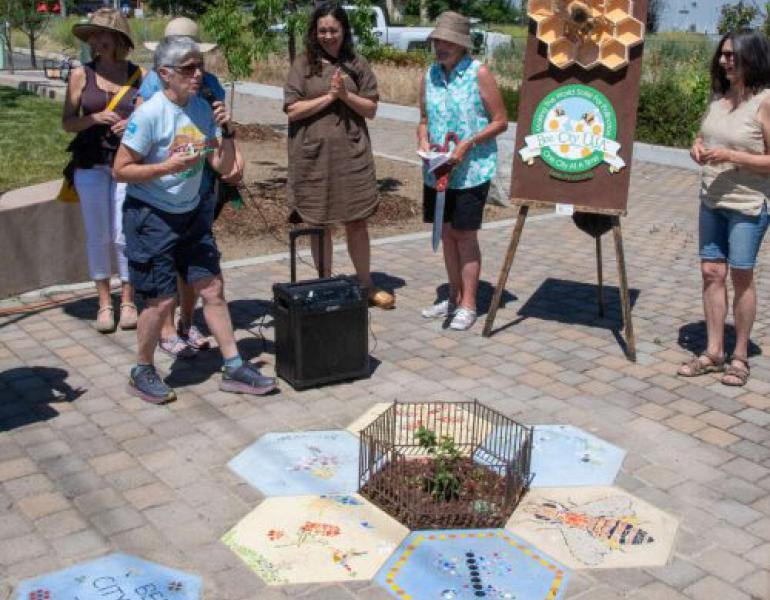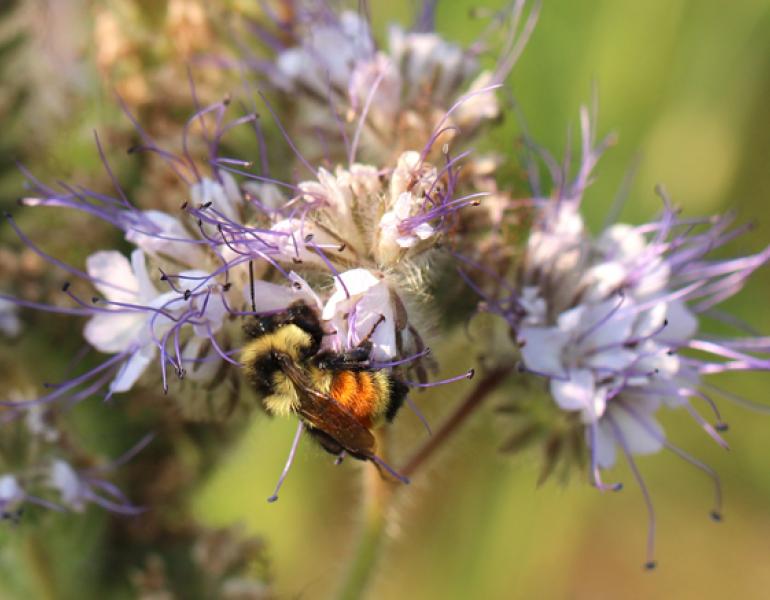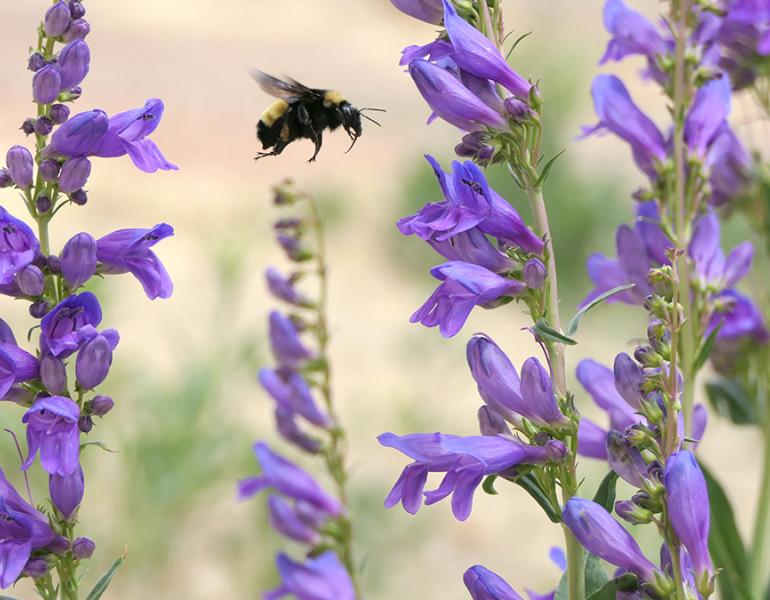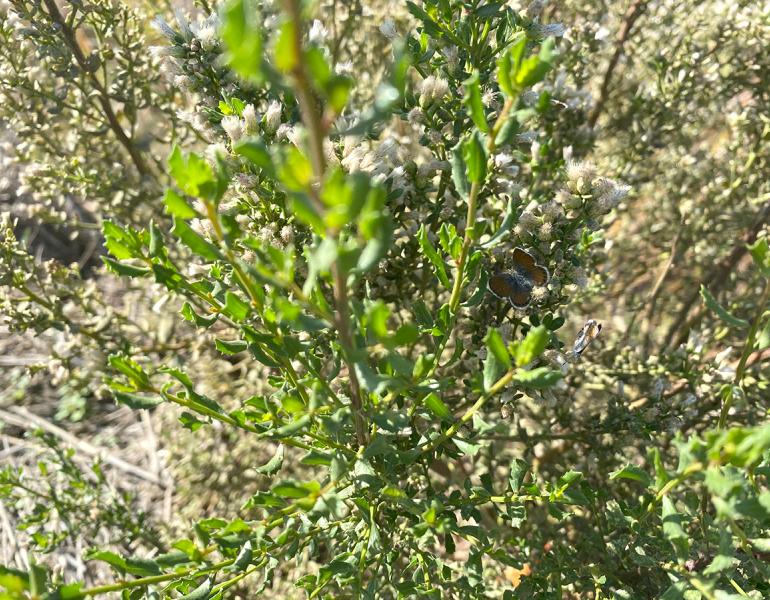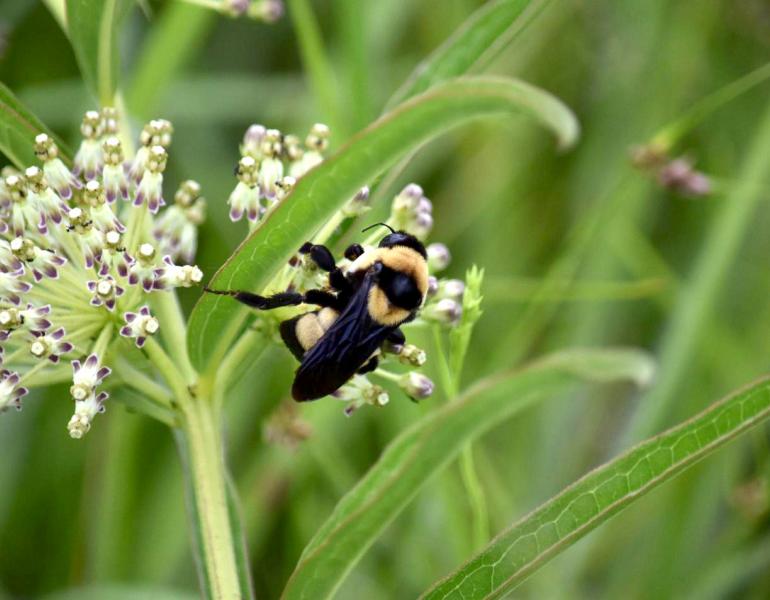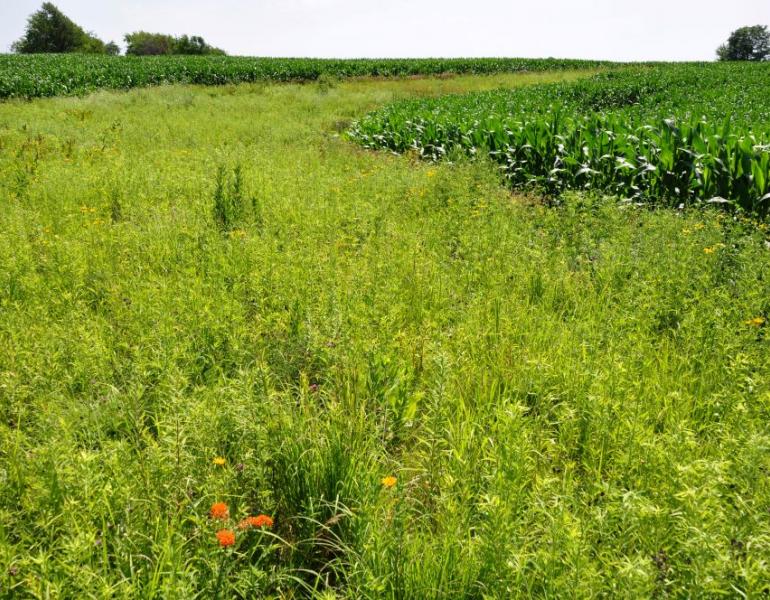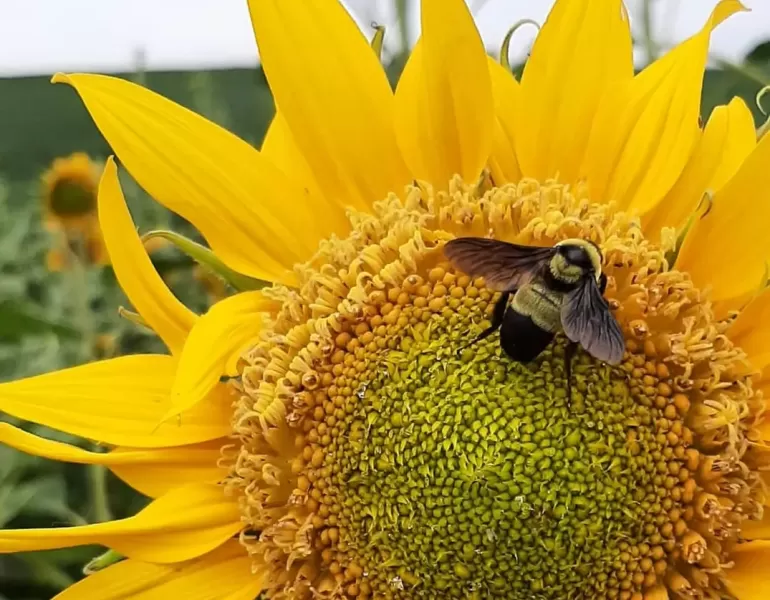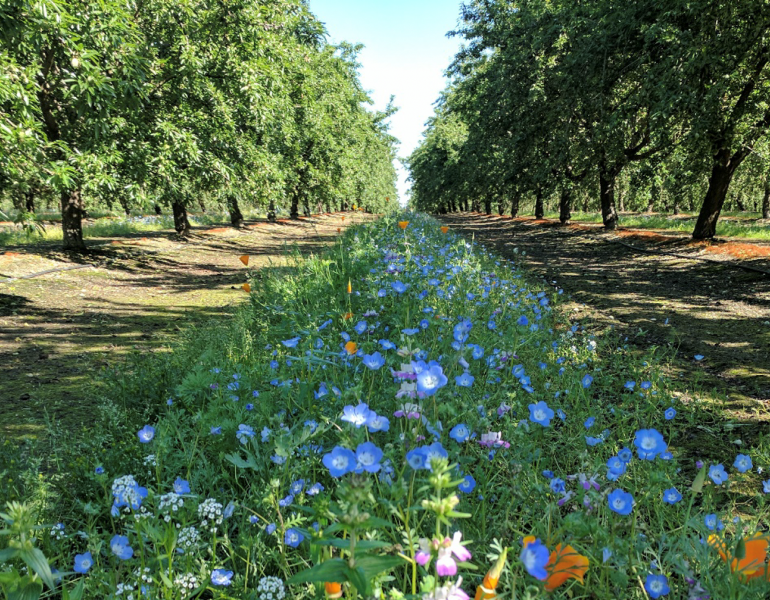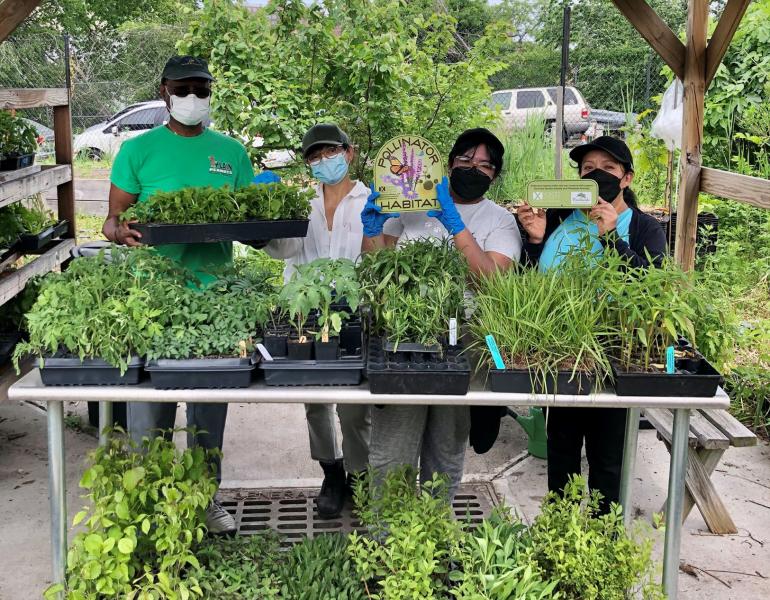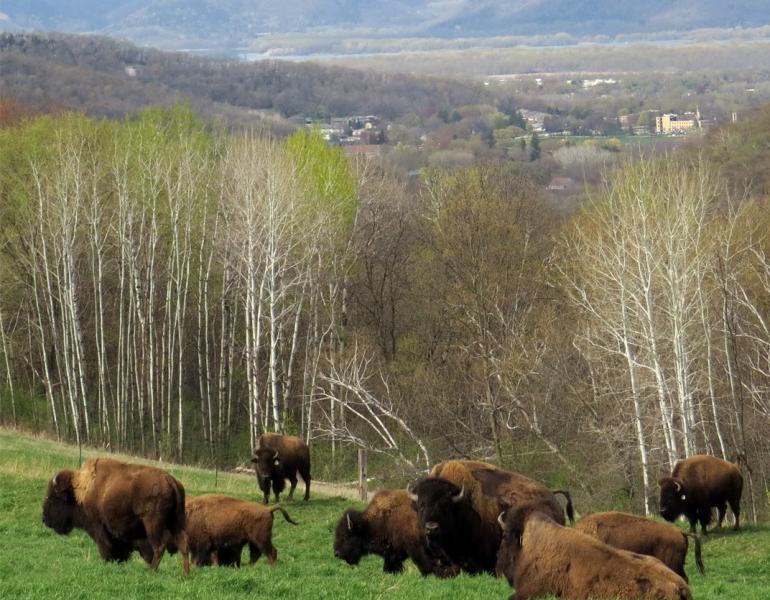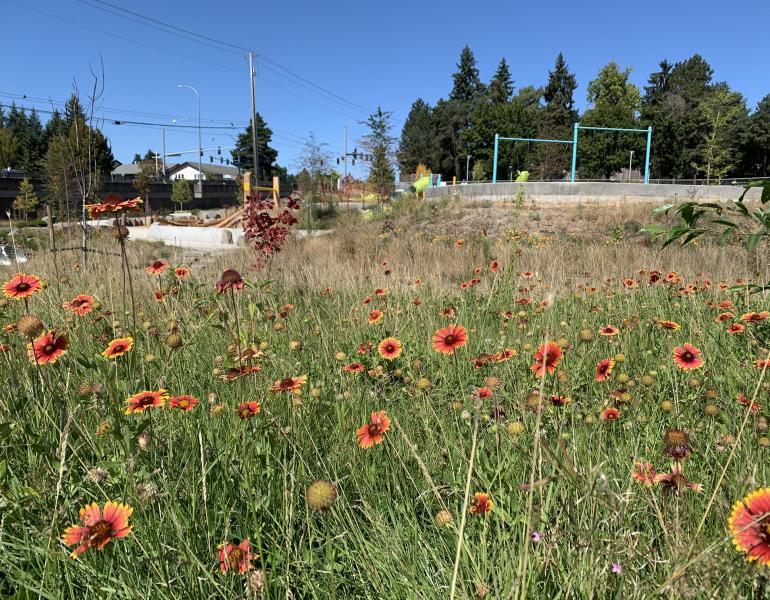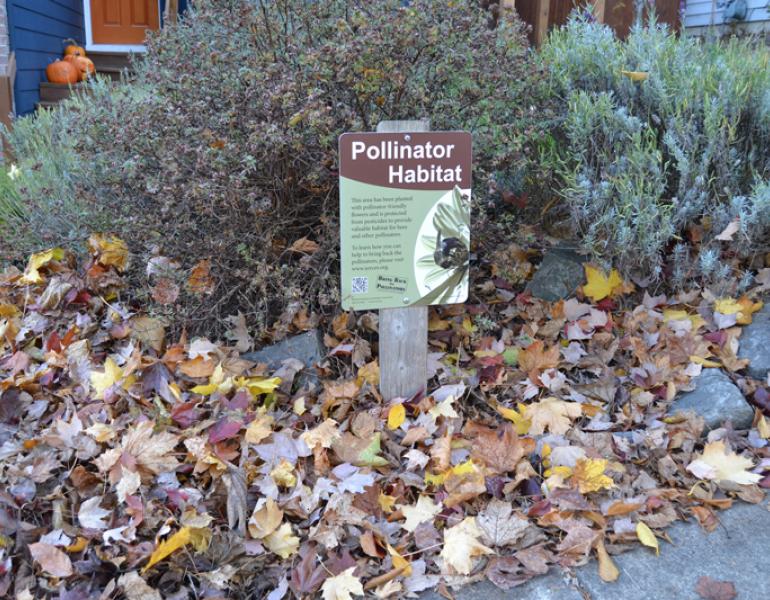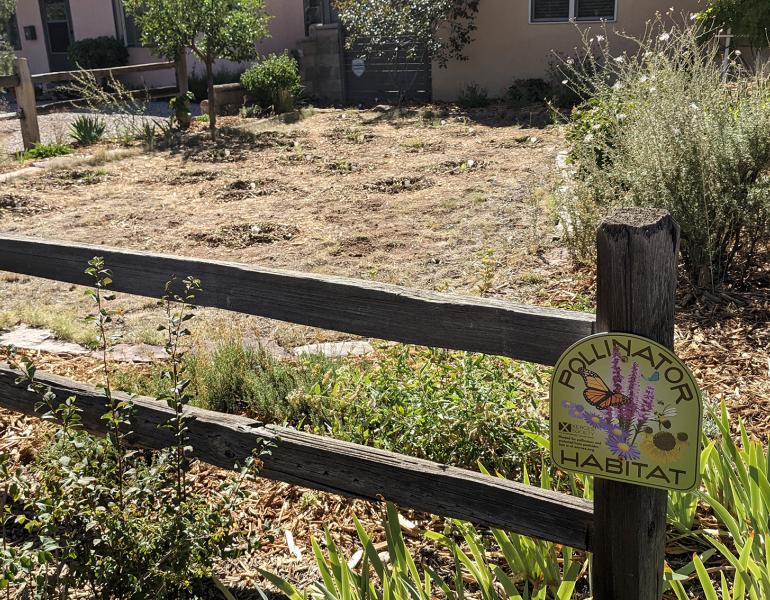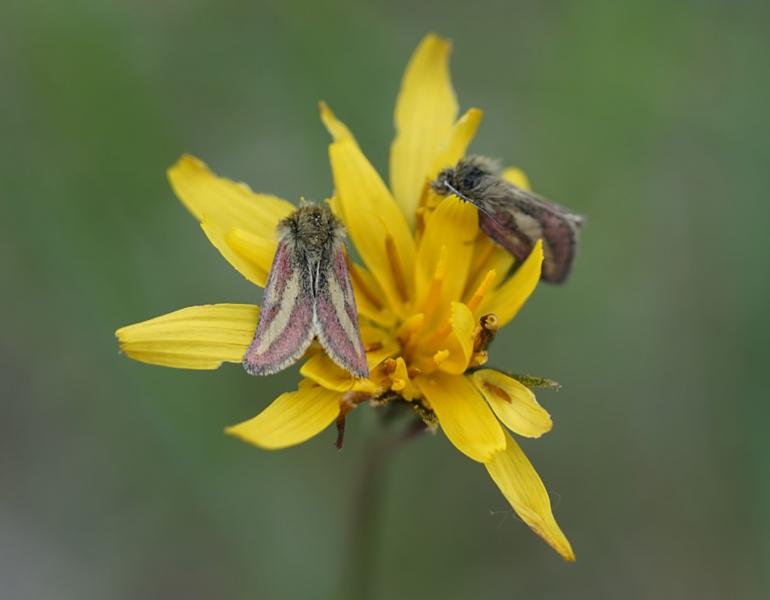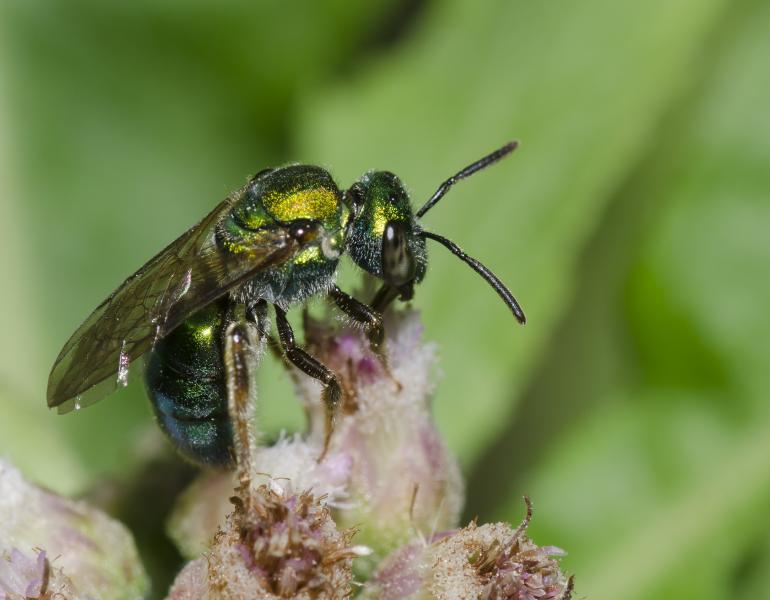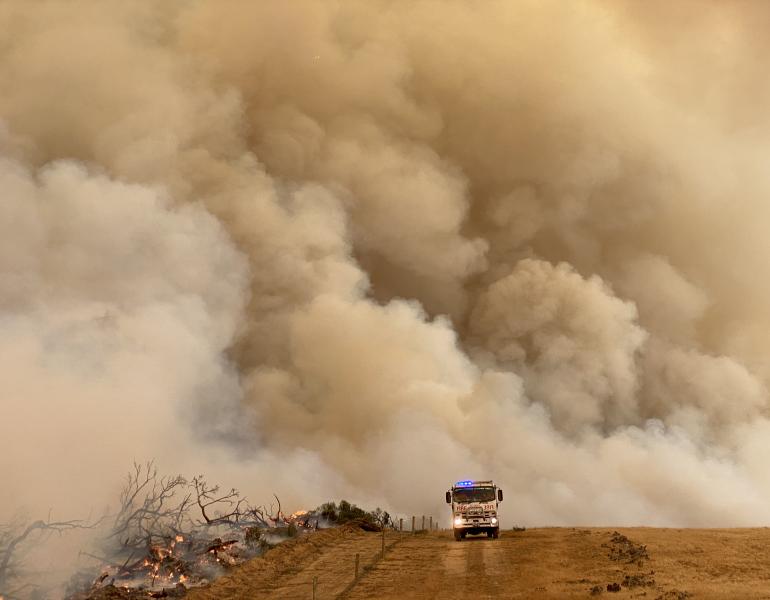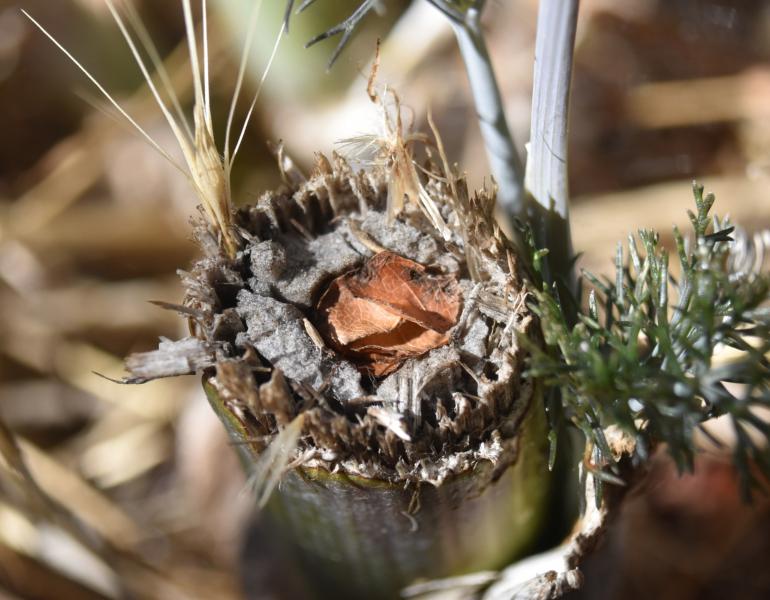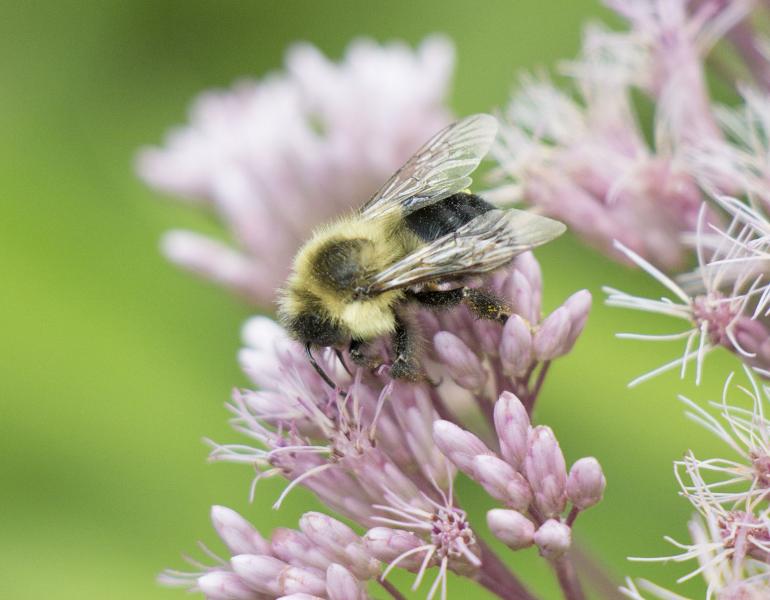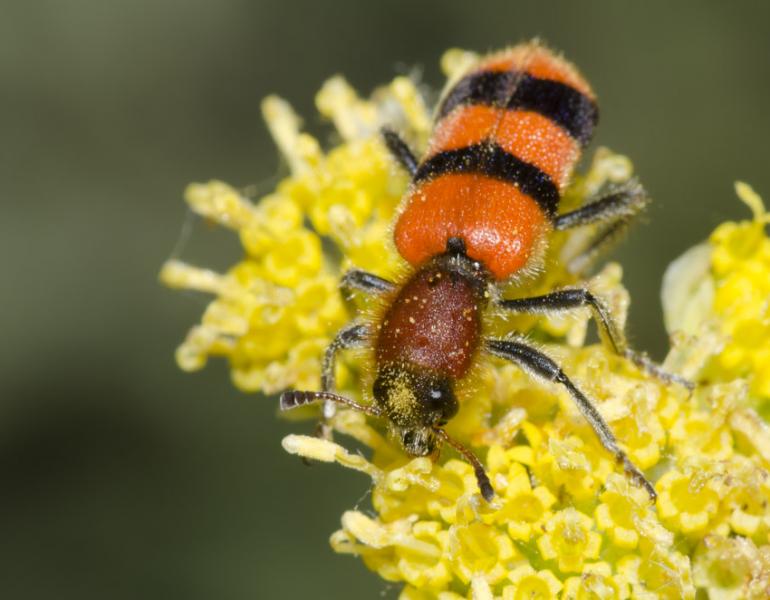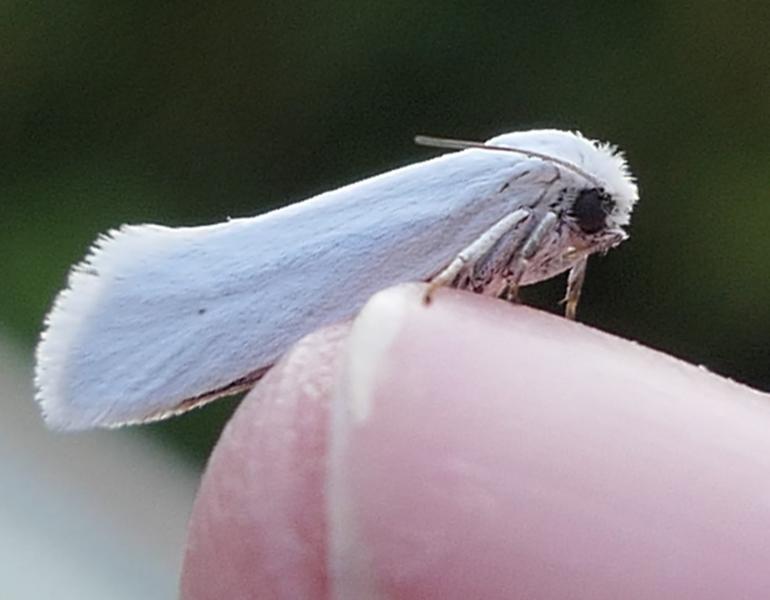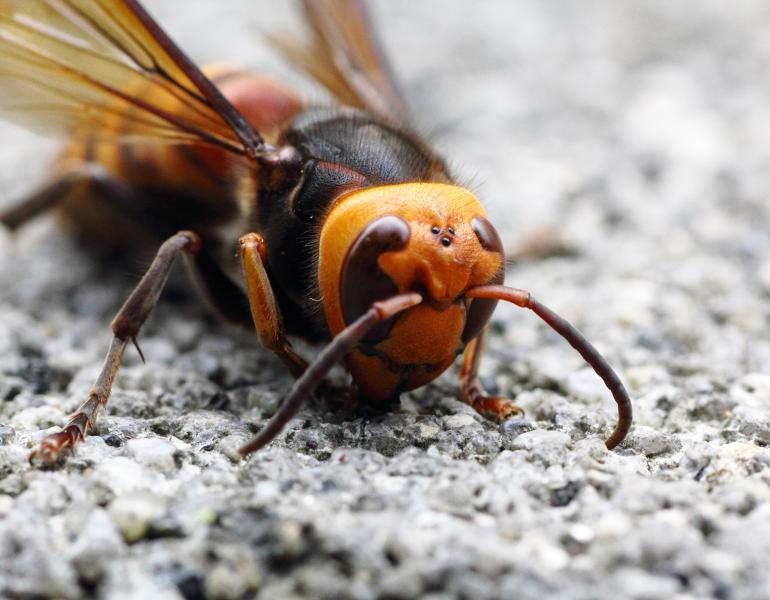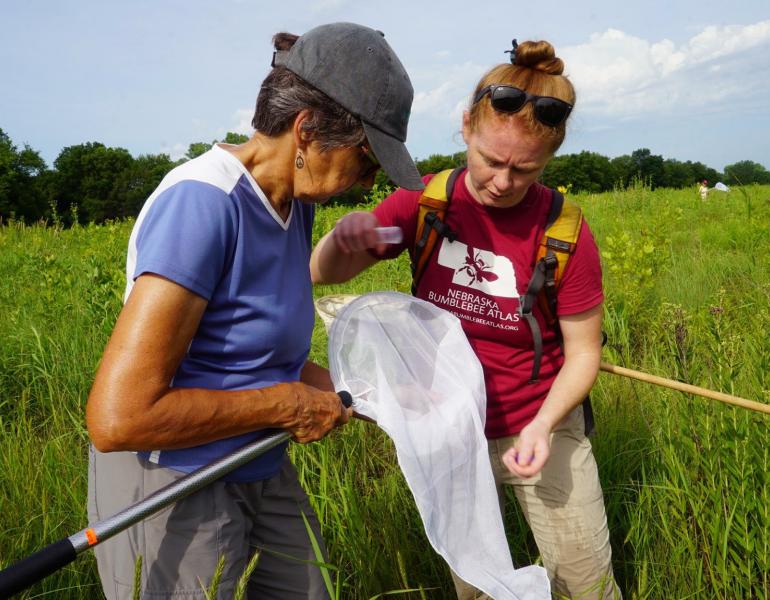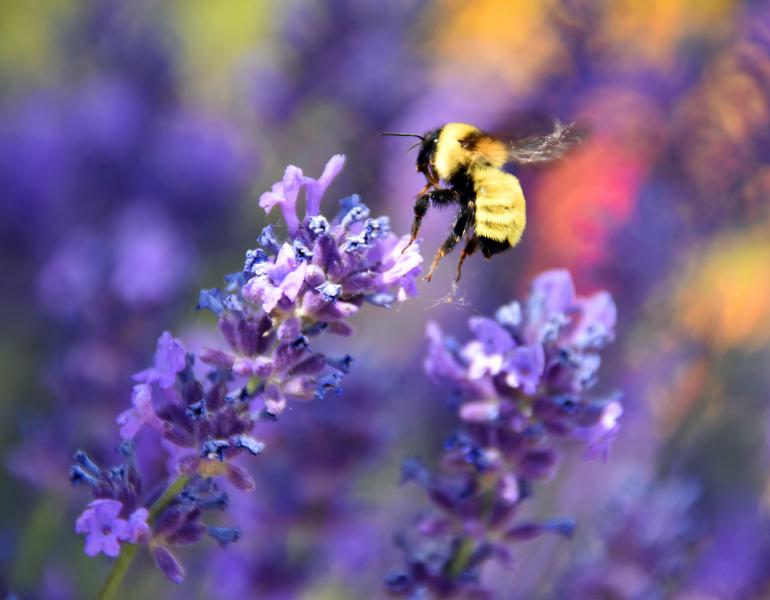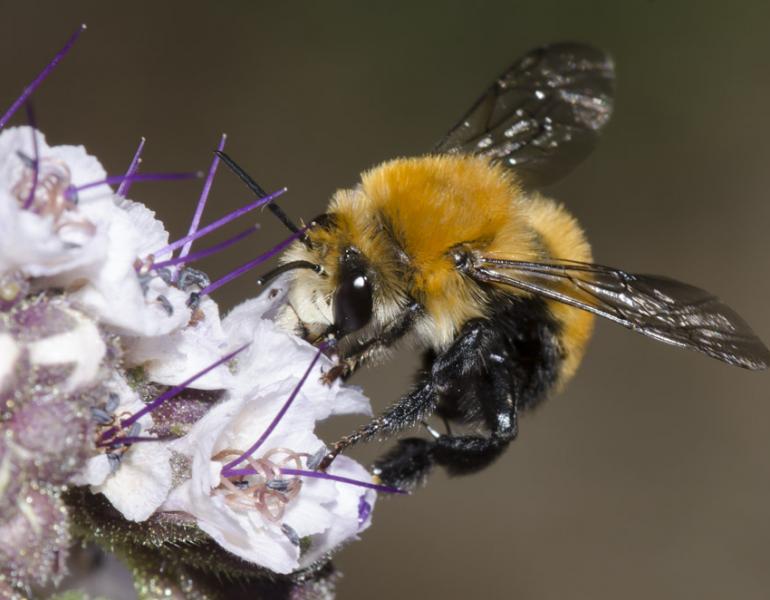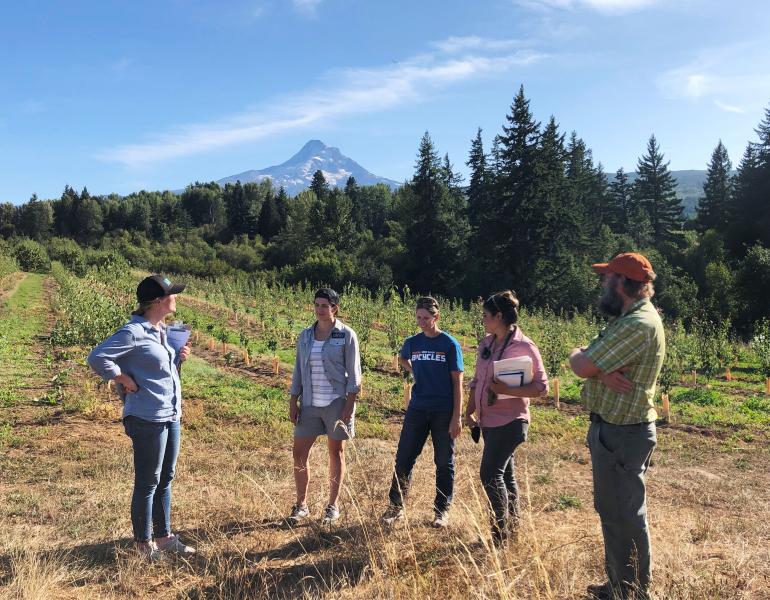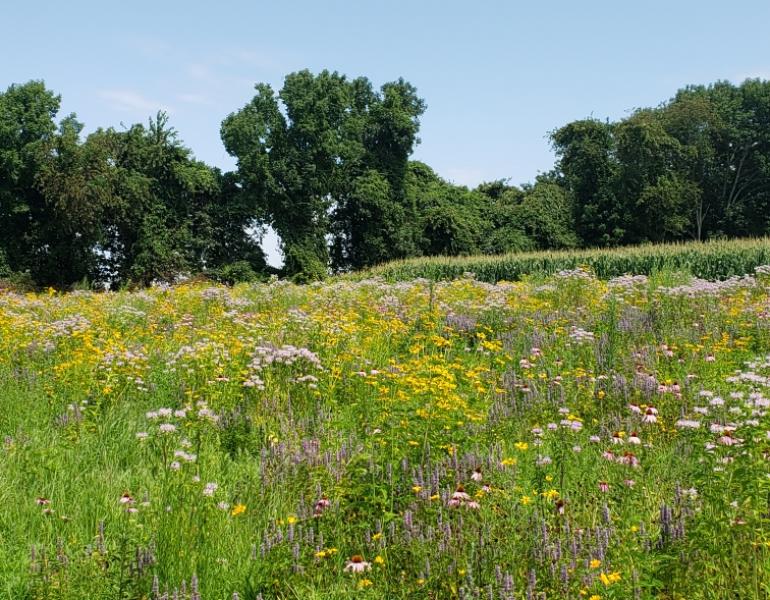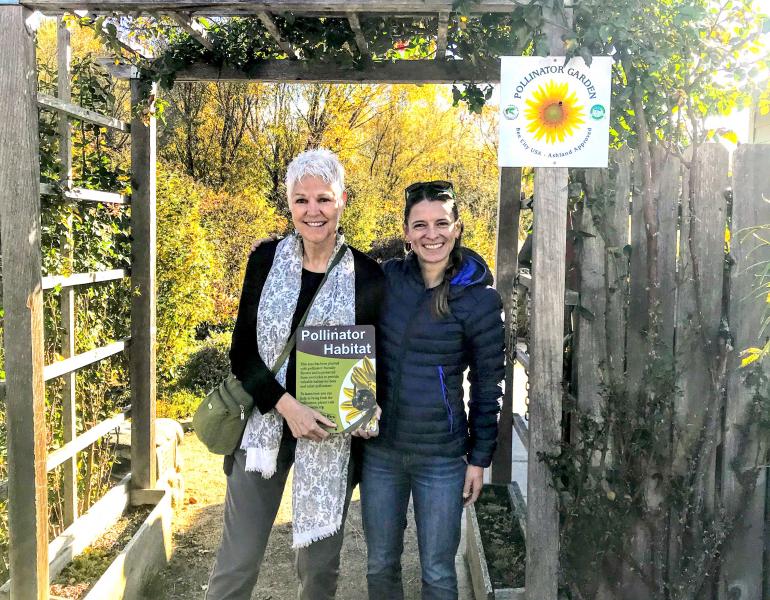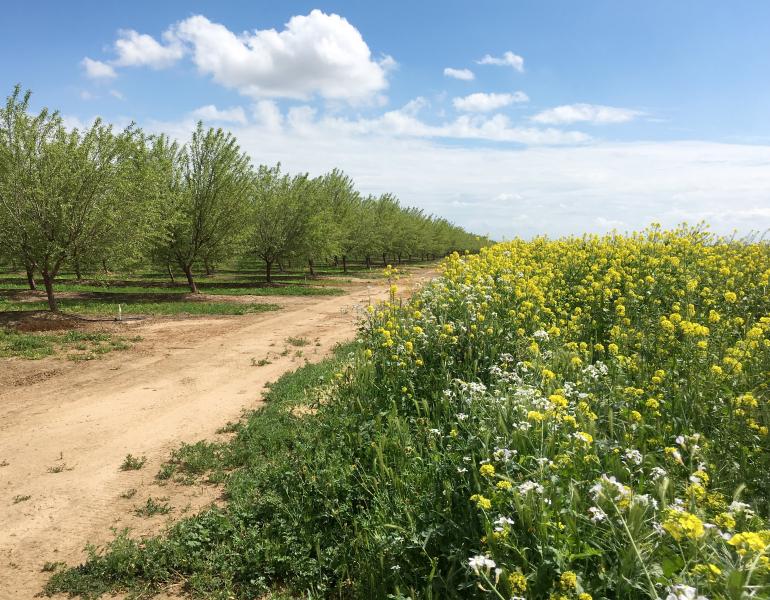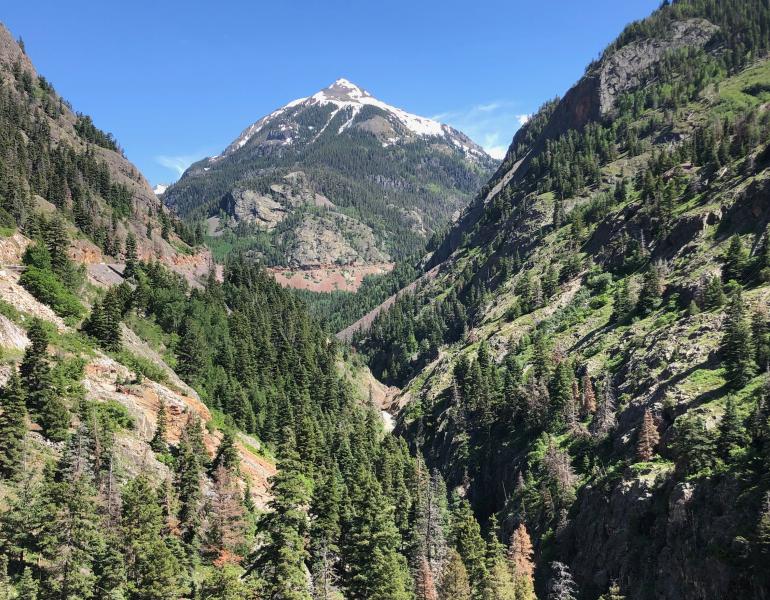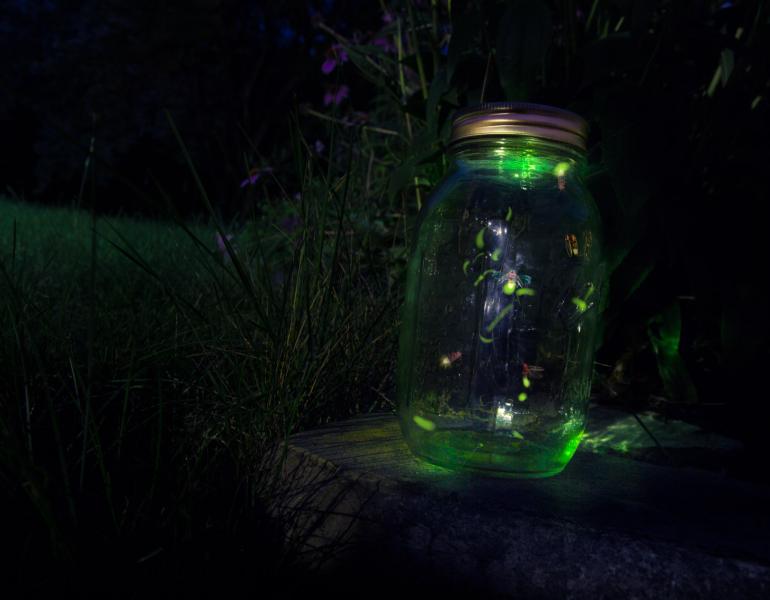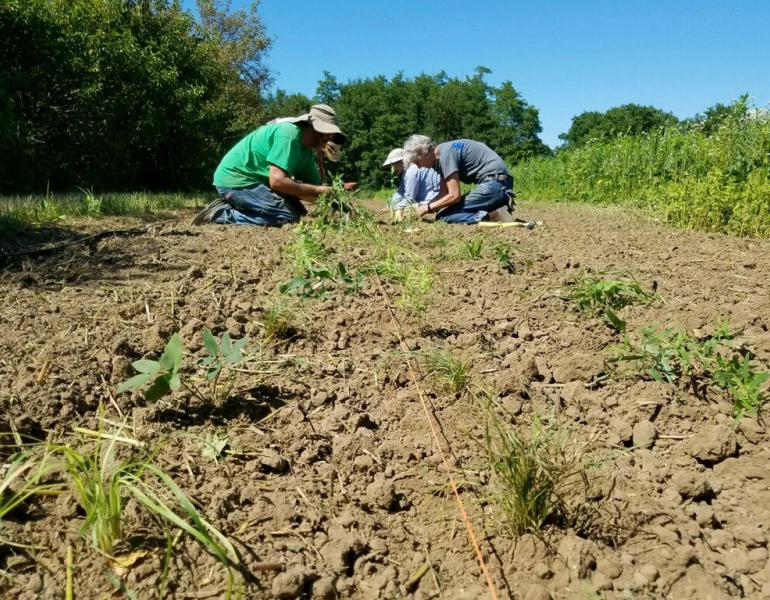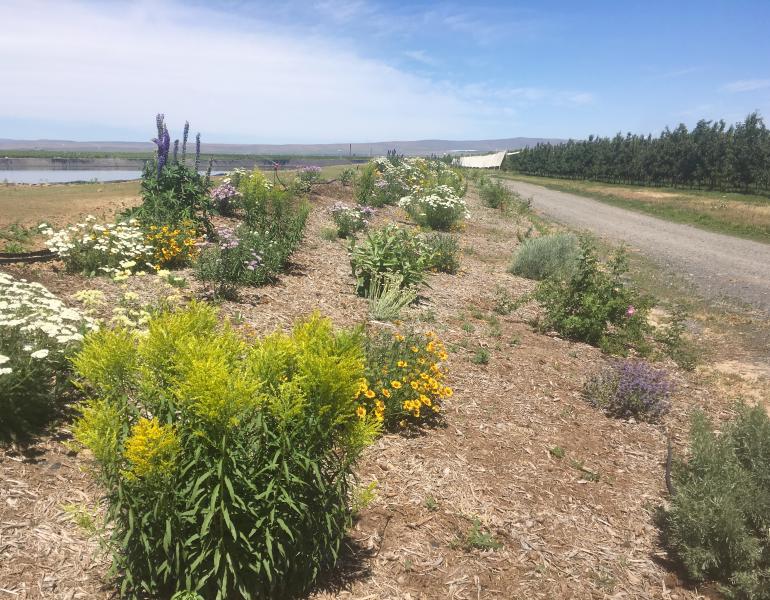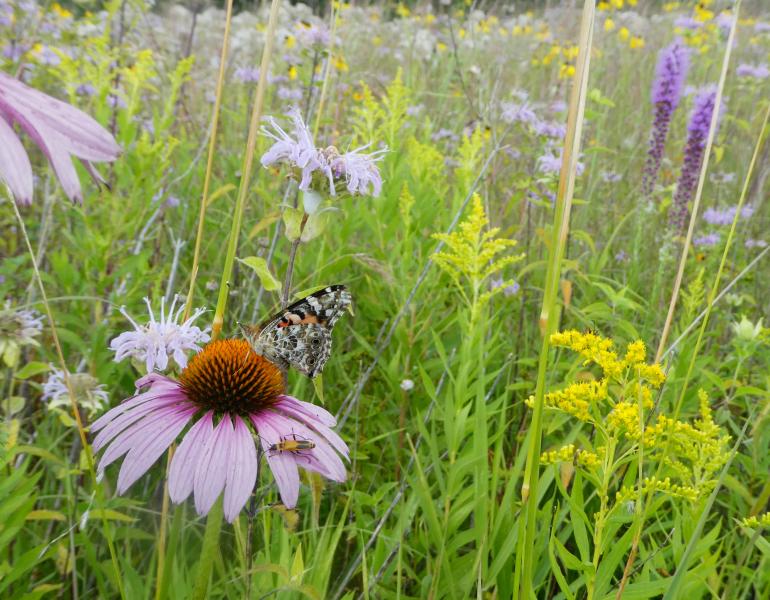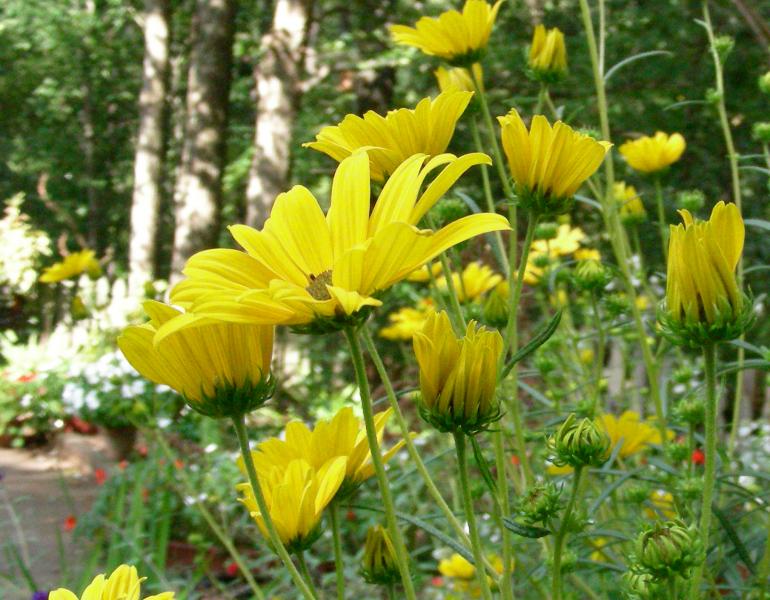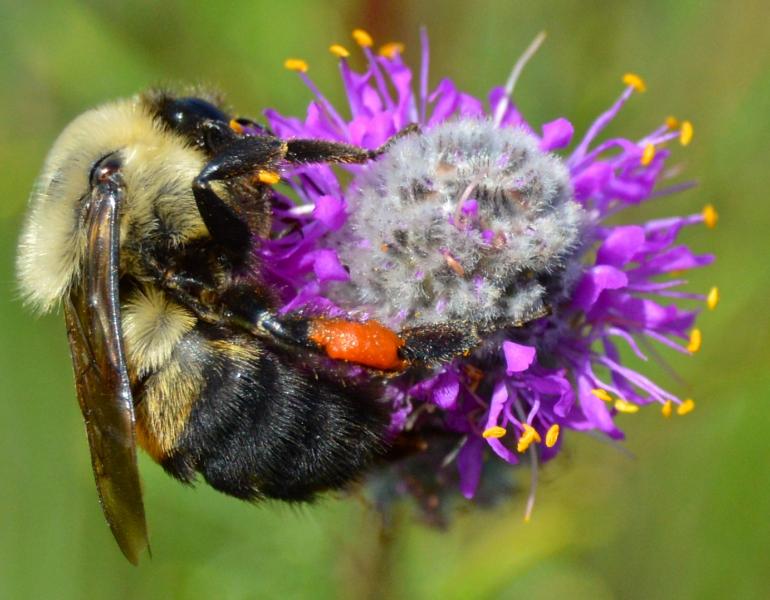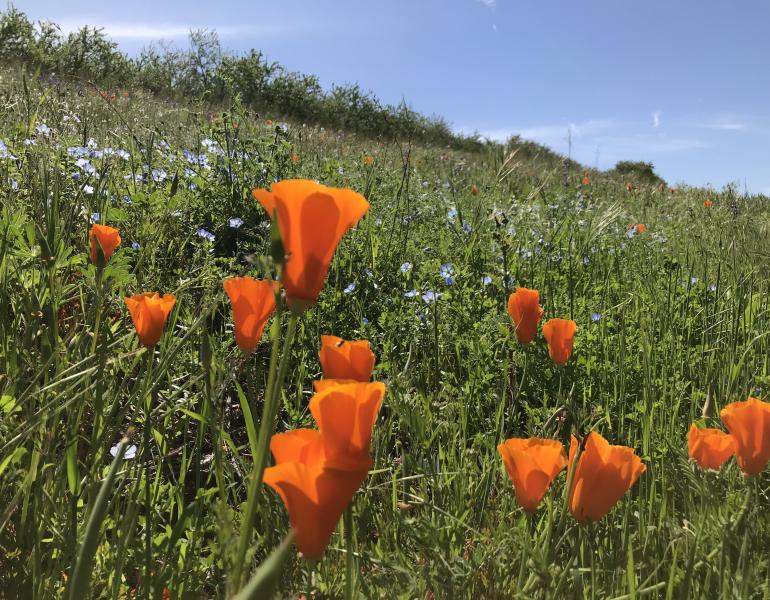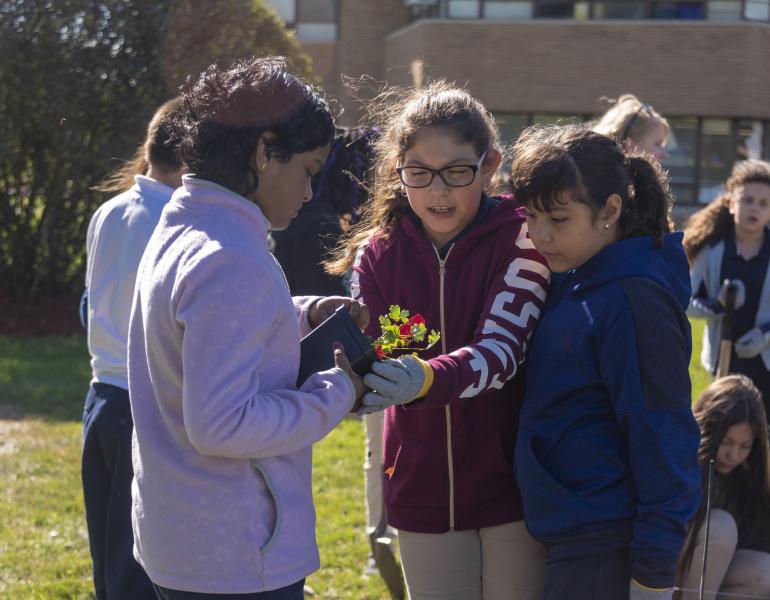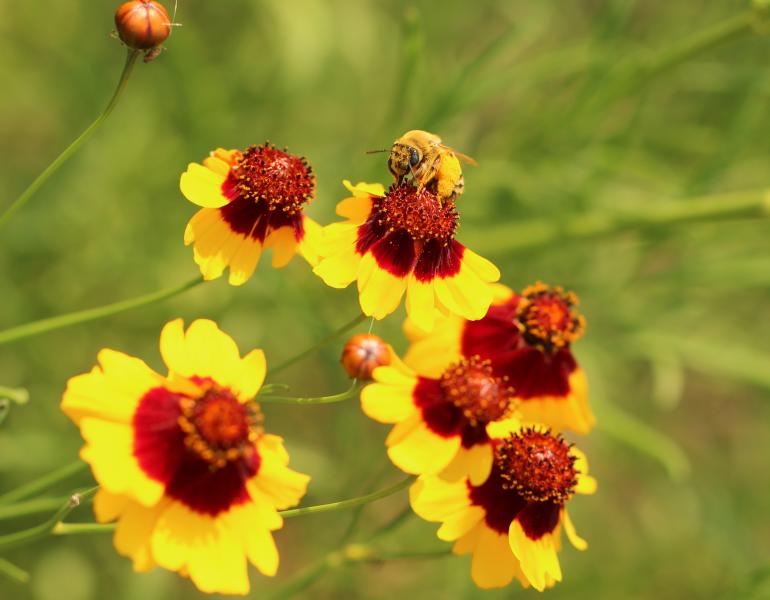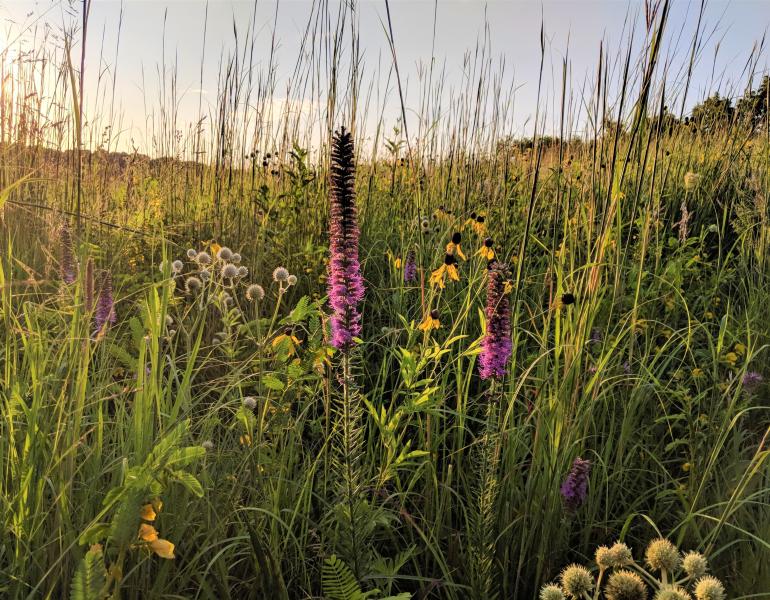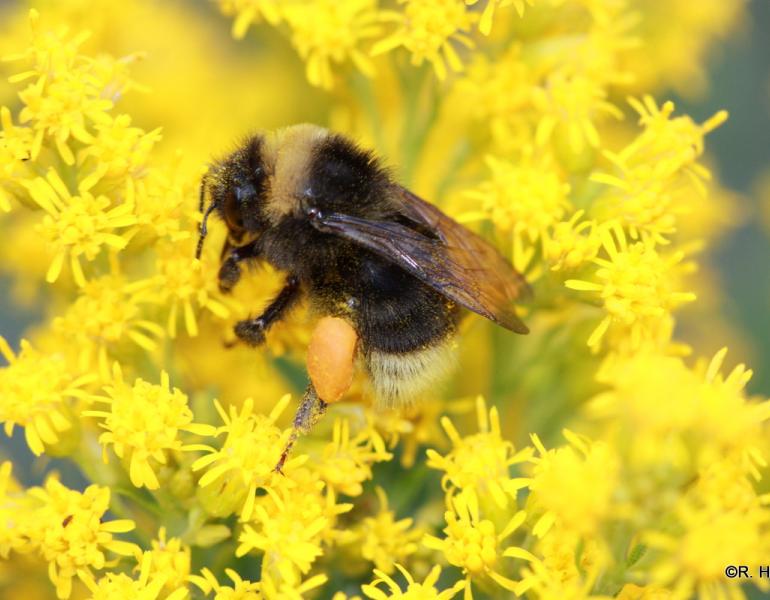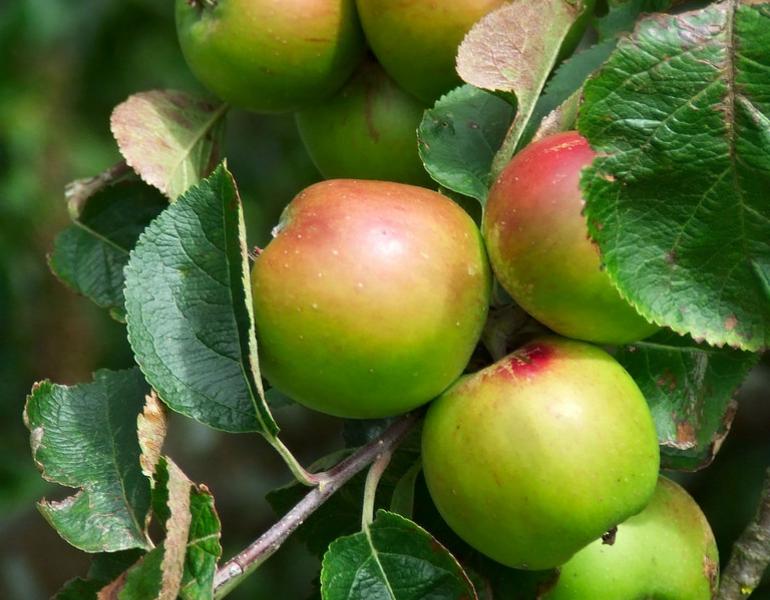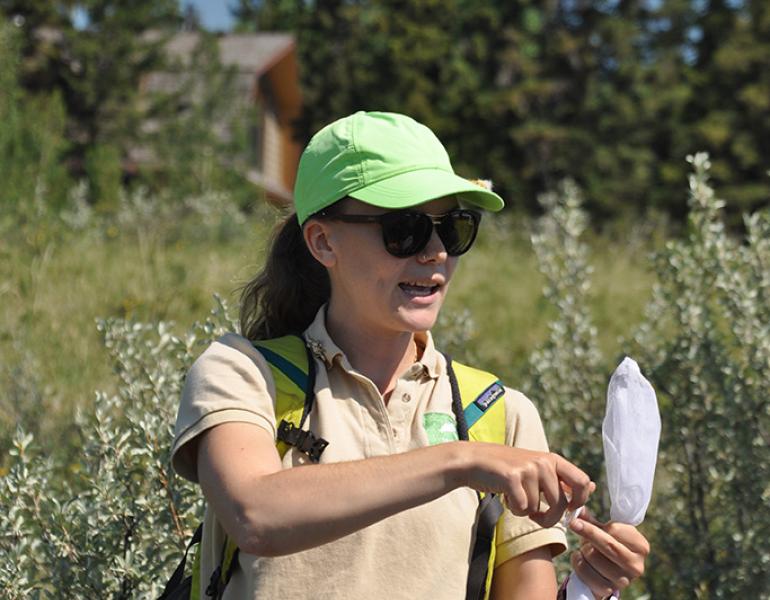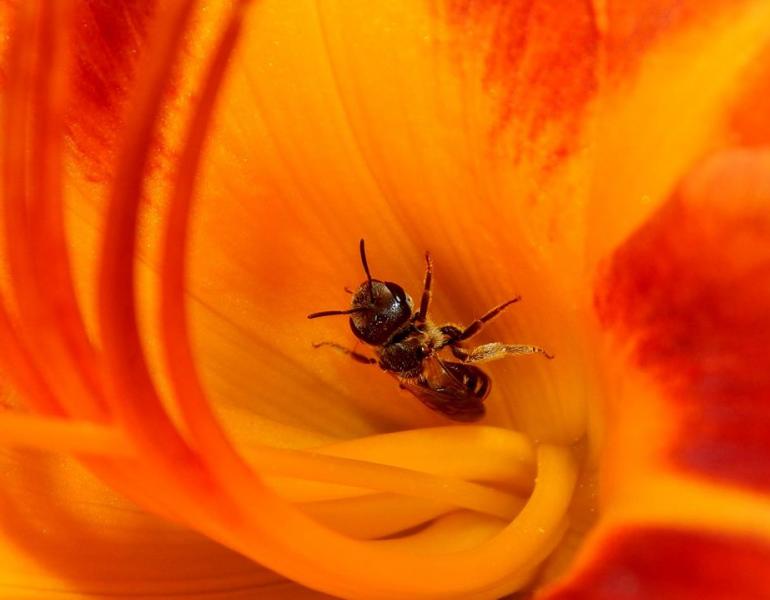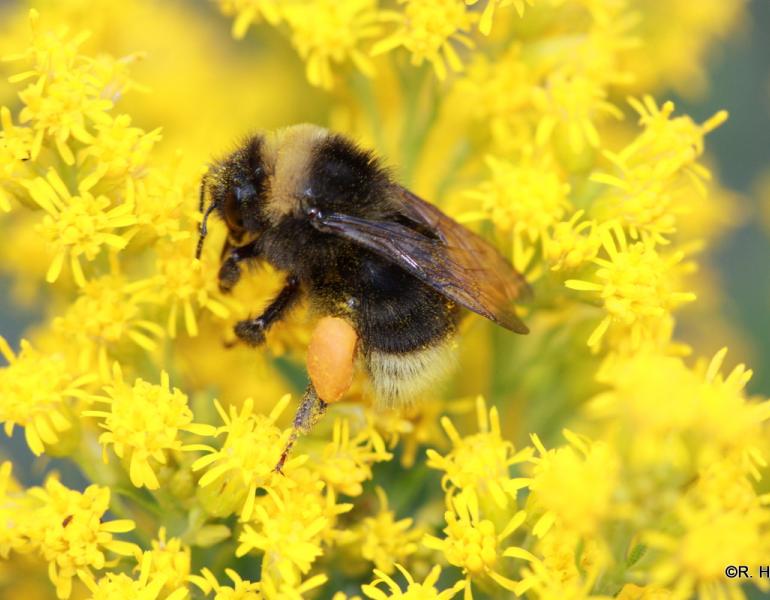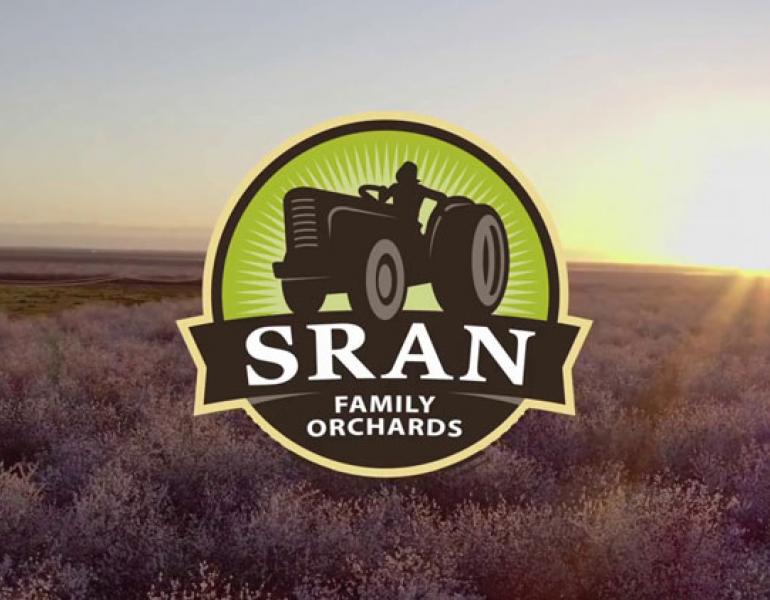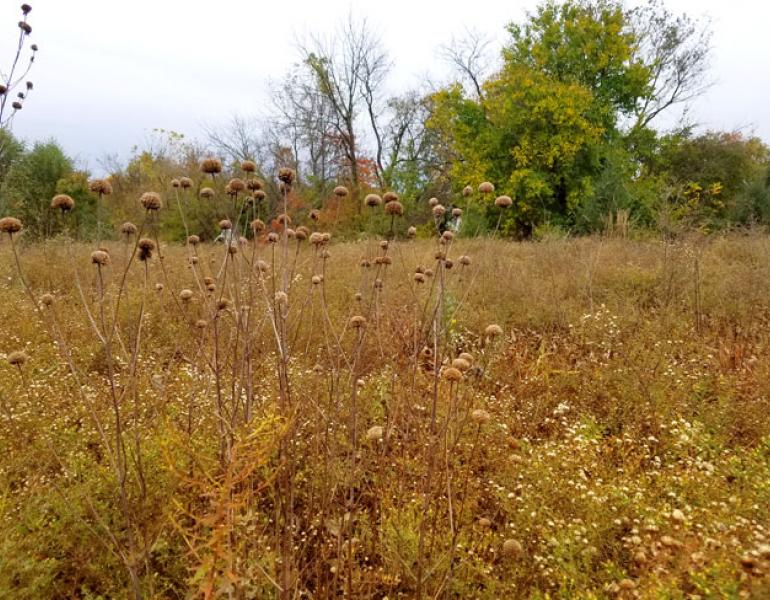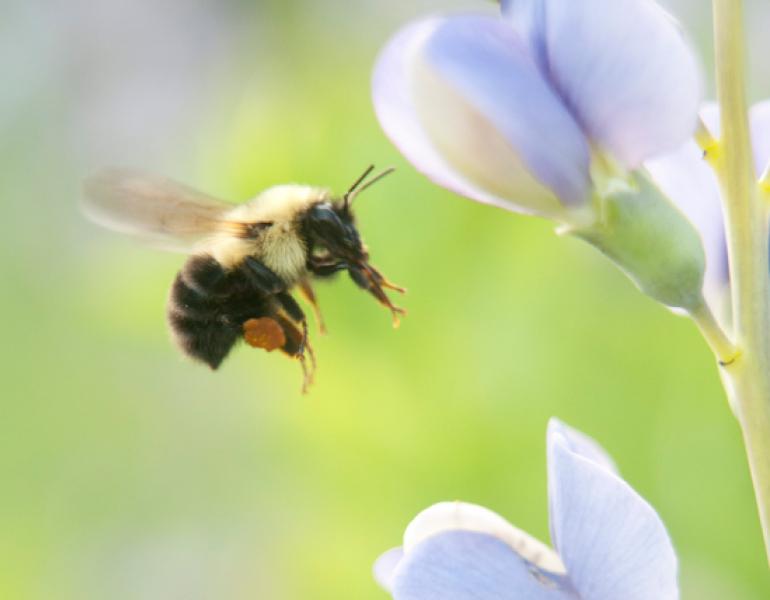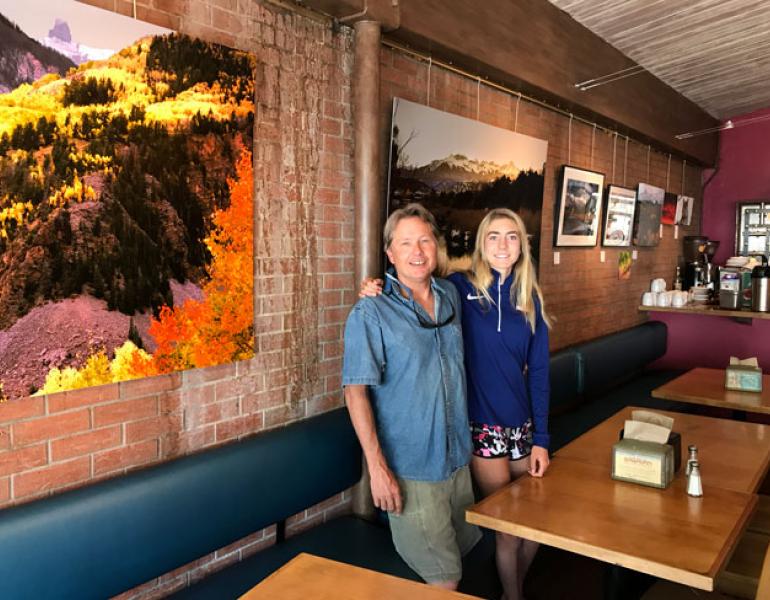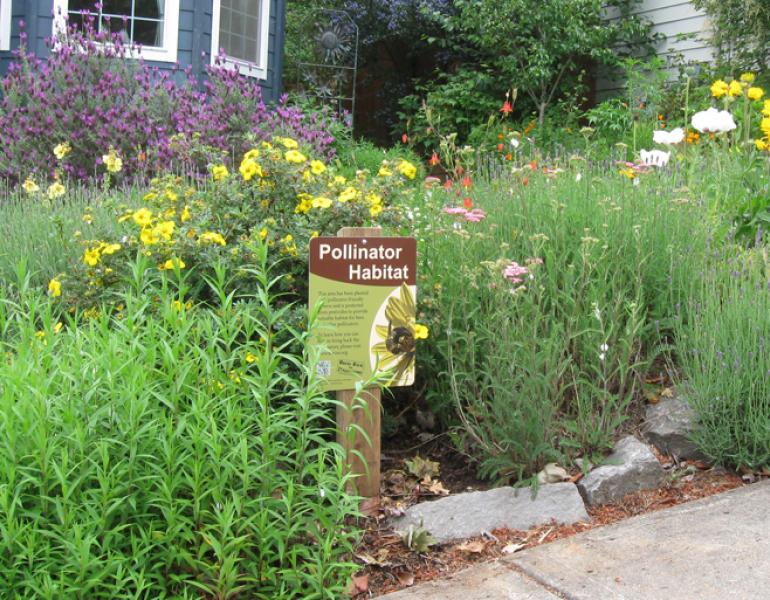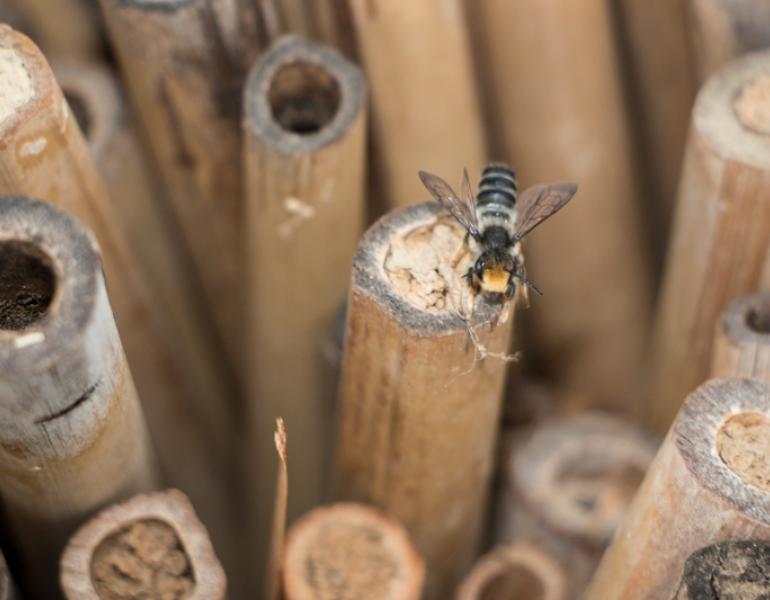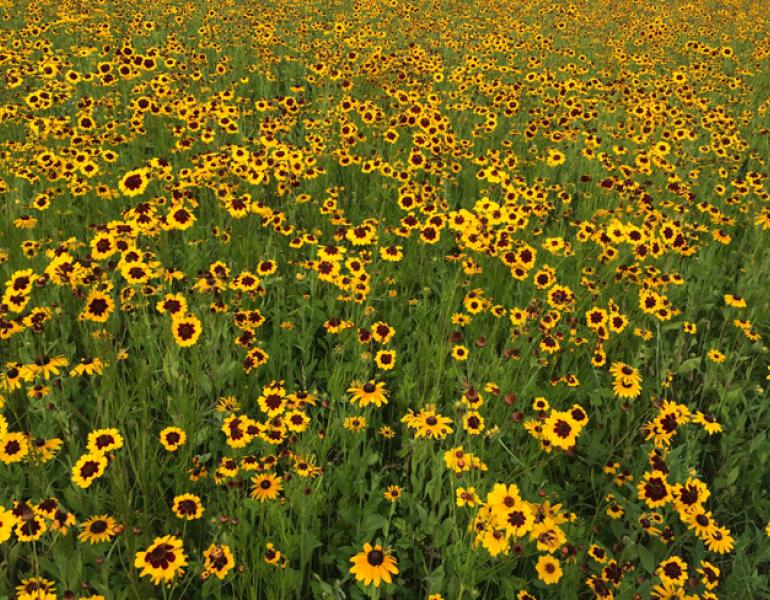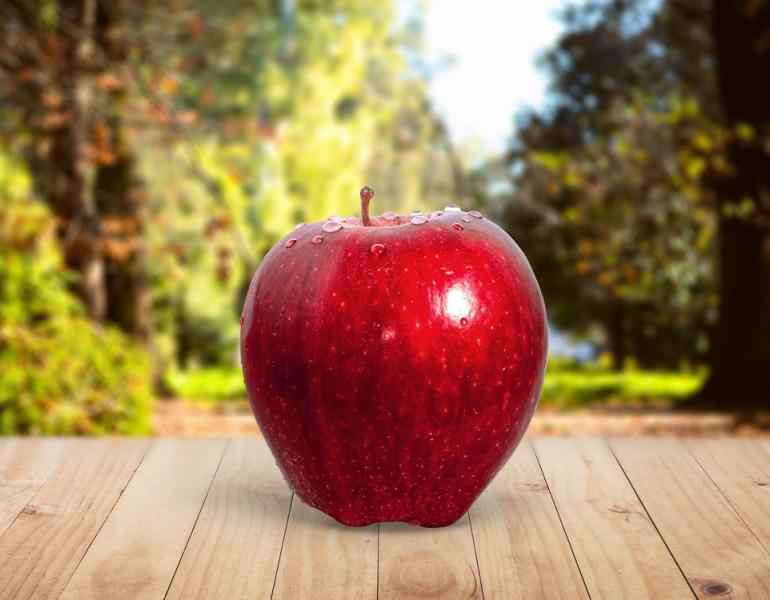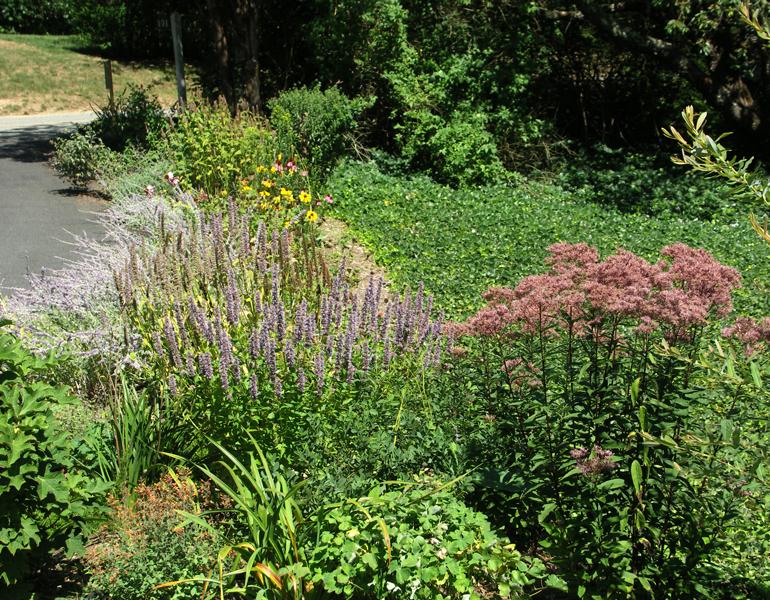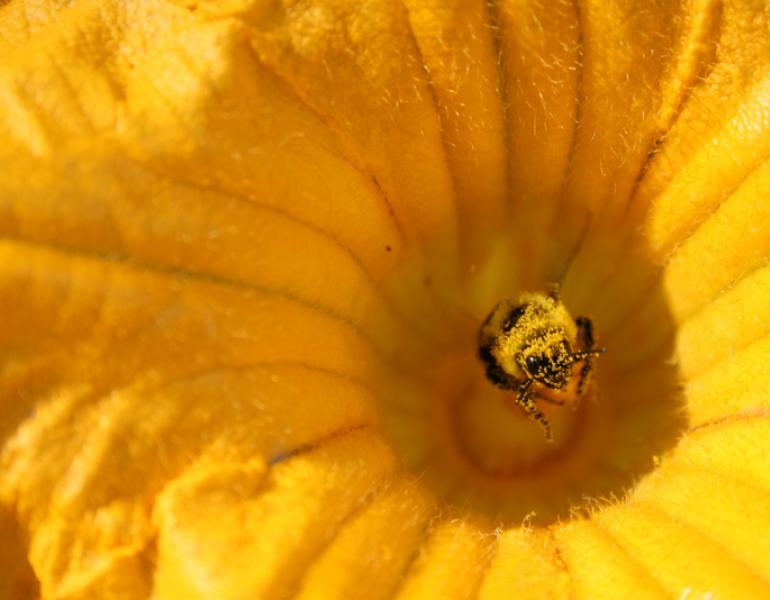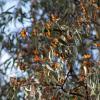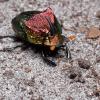One of the most valuable ways to support pollinators and other invertebrates is to provide them with the shelter they need to survive the winter. Thankfully, all you need to do is do less yard work.
Pollinators
How to Collect Seeds From Milkweed: A Pod and a Plan
Harvesting local milkweed seed for later planting is a great way to increase monarch breeding habitat. We'll teach you how to harvest and separate the fluff from the good stuff.
If You’re Thirsty, They’re Thirsty: Make a Simple Water Source To Support Pollinators
Even a humble puddle can make a big impact for your backyard wildlife. Learn how to make one that fits your space.
All About Hedgerows: Why They Help Wildlife and How to Plant Them
Hedgerows are more than just a living fence! With the right plants, they can be an incredible habitat for pollinators.
No Mow May: An Easy Start for a Nature-Friendly Yard (But Not the Finish Line)
"No Mow May" is a quick and catchy name for a movement that aims far beyond not mowing the yard for a month. It's a gateway to understanding how we share our lawns with many small creatures.
For Pollinators' Sakes, Don’t Spring into Garden Cleanup Too Soon!
Early spring garden cleanup can disrupt critical invertebrate habitat and leave pollinators out in the cold. Our guidelines will help you determine when cleaning up won't bug the pollinators in your space.
How To Control Garden Pests While Supporting Pollinators
Learn how to set your garden up for success with integrated pest and pollinator management (IPPM)!
Nature Notes: Snapshots of the Wildlife in our Gardens
Members of the Xerces Society’s pesticide reduction team share fun and fascinating observations of invertebrates in and around their yards and gardens.
From the Field: Searching for Pollinators in an Iowa Prairie
Sarah Nizzi takes us out to a hands-on training about pollinator conservation.
Inspiration for Pollinator Conservation: Habitat Kits for Urban Farms and Gardens
Stefanie Steele shares her path to pollinator conservation, and her work to help urban farmers add pollinator habitat to their spaces!
Inspiration for Pollinator Conservation: Protecting Waterways with Pollinator Habitat
Julie Michaelson shares her path to pollinator conservation, and her work to build habitat and protect our waterways by surrounding them with native plants!
Inspiration for Pollinator Conservation: Hedgerow Habitat on Farms
Angie Orpet talks about her career path, and her work building pollinator habitat on farms!
Inspiration for Pollinator Conservation: Wildflowers on Rangelands
Sarah Hamilton Buxton shares her path to pollinator conservation, and her work to promote more diverse plant communities on rangelands of the Great Plains!
More Retailers Are Requiring Produce to be Certified as Pollinator-Friendly
With two of the largest food retail companies in the US already making commitments to pollinator health, more are likely to follow!
To Protect Pollinators, We Need to Fight Light Pollution
Just as water pollution makes every drink dangerous, light pollution puts nocturnal bugs at risk.
Clear Space for Bees: Why Pollinators in Your Yard Need Access To Bare Ground
Open patches of soil and sand, with few or no plants, are a key nesting habitat for the majority of native bees, and easy for us to provide.
Tiny Places for Tiny Animals: Building the Microhabitats that Bugs Need to Thrive
It’s easy to add small features, like a brush pile, dead stems, or a leafy corner that can make a big difference for wildlife! Here's how.
Air Pollution Hurts Pollinators Too, but We Can Help
While we can wear respirators and turn on air filters to manage the impacts of air pollution, pollinators have to rely on us to protect them.
Middle School Students Plant Habitat at a Washington Orchard
Last fall, Washington middle schoolers helped plant blooming hedgerows while learning about a local orchard’s connection to invertebrate conservation.
High School Students Depave a Parking Lot to Plant a Garden
With support from USDA NRCS, Xerces, and the local community, a Philadelphia high school parking lot became a space for gardening and pollinator habitat.
Bee City USA Celebrates its Tenth Year
2022 was another notable year for Bee City USA and Bee Campus USA!
Pollinator Friendly Cover Cropping for Vegetable Farmers
Planting cover crops in bare agricultural fields not only improves soil health and suppresses weeds, but it can also attract beneficial insects! We're here to help navigate the complexities and nuances of the optimal cover cropping system.
Midsummer Management of Crop Pests and Pollinators
At the peak of summer, you can keep crops buzzing and send pests packing in a pollinator-safe way.
Meet the Cast of Pollinator Week
Every June we celebrate National Pollinator Week to give extra thanks to pollinating animals like bees and butterflies. You might be surprised to learn which other animals are pollinators too!
A Journey Down the Santa Fe Pollinator Trail
What does it take to build a pollinator-friendly city? Along the Santa Fe Pollinator Trail, this question has been answered plant by plant, across dozens of organizations and hundreds of helping hands.
These Are My Most Trusted Native Plants for Restoration and Here’s Why
Anna Murray, pollinator habitat specialist, understandably plants a lot of plants. Here she breaks down a list of favorite natives for habitat restoration in California. These plants get the job done even in the most challenging situations — and they will keep you from groaning, “Buckwheat, again?”
Summer on the Arkansas Prairie
Dr. Ray Moranz reflects on summer trips to Arkansas prairie, where he co-delivered courses on pollinator conservation to folks uniquely positioned to relay that information to agricultural producers. Ray shares some of the sights and critters he saw along the way.
Part 2: How research about pesticide risks informs our efforts to rewild agricultural landscapes
Over the past decade, Xerces has worked with thousands of farmers and land managers to build over a million acres of habitat. Each of these projects, no matter how small, is meaningful and important to us. Our staff spend hours on the details, fine-tuning the mix of plants to suit the local conditions and support as many species as possible, determining how the site will be prepared and installed, and finding ways to protect the resulting habitat from pesticides. Last week, I shared a review of the latest research on how agricultural pesticides may impact nearby pollinator habitat. Today, I’ll talk about how we apply this research to our work at Xerces.
Pollinator Week 2022: Meet Our Staff Favorites
At Xerces, our love for pollinators is a year-round affair. In honor of Pollinator Week 2022, we’ve asked our staff to share some of their very favorite flower-buzzers and why they love them. We hope you find a new friend or a familiar face on this list, and we’d love to hear which pollinator you carry a torch for, too.
Protecting New Mexico's Very Hungry Caterpillars
There is a lot to celebrate in New Mexico during Pollinator Week, literally: it is home to some of the greatest diversity of bees and butterflies in the United States. New Mexico hosts about 40% of all butterfly species and a quarter of all of the bee species found in the US (approximately 300 and 1,000 species, respectively). Emily Ruth Spindler shares how Xerces' work is expanding to protect the state's priceless invertebrate biodiversity.
Investing in pollinator conservation through urban agriculture
Xerces’ conservation efforts span across many different types of landscapes, including cities. With the addition of Stefanie Steele, Xerces new Pollinator Conservation Specialist for Urban and Small Farms in Historically Underserved Communities, we are striving to bridge the gap between pollinator conservation efforts in urban and rural agricultural areas.
More Than Food: A New Roadmap for Agriculture
In recent years, invertebrates on farms have received a little more mainstream attention, often under the broader umbrella of “regenerative agriculture,” a loosely defined philosophy that proposes farms should improve rather than diminish natural resources. With supporting investments from the USDA National Resources Conservation Service (NRCS), the Xerces Society recently inaugurated a five-year, multi-state research and development project focused on evaluating conservation practices that simultaneously maximize climate resilience, biodiversity, and market incentives.
Habitat Kits: Partnering to Support Monarchs and Pollinators
Since 2019, the Xerces Society Habitat Kit Program has united Xerces, local residents, and native-plant nurseries to offer regionally appropriate plant materials grown to order by nurseries and supplied to our community partners. In return community members provide sweat equity: the time, the labor, and land. The habitat kits not only help people plant and nurture habitats that support monarchs and other pollinators, but they also remove financial barriers for groups and individuals who want to help.
Selecting seeds for bison, pollinators to share the land
While designing a unique seed mix for restoration takes time, it can be well worth the extra effort. The right mix of plants can boost the long-term ecology and function of a landscape and can be particularly important for working lands – those with multiple uses like agroforestry, grazing and silvopasture. In this article, Farm Bill Pollinator Conservation Planner Karin Jokela describes making the perfect mix to balance the needs of bison and pollinators.
New Guidelines Support Creation of Pollinator-Friendly Parks
To support the work being done by park managers across the country, the Xerces Society has recently released Pollinator-Friendly Parks: Enhancing Our Communities by Supporting Native Pollinators in Our Parks and Other Public Spaces. This is an updated and greatly expanded version of the 2008 release of Pollinator-Friendly Parks, chock full of information to help park managers plan and care for properties with pollinators and other insects in mind.
Midwinter Tasks for Pollinator Gardening
Even in January there are small actions you can take to support pollinators. Xerces' Pesticide Program Director Aimée Code shares what's on her winter chore list for her Pacific Northwest pollinator garden.
Santa Fe Pollinator Habitat Kit Program Connects Pollinators and People
In Santa Fe, NM, Xerces is working with local partners to develop a city-wide Pollinator Trail focused on creating connected habitat through neighborhoods that lack greenspaces. In September, after months of planning and preparation, 350 habitat kits were distributed to residents and organizations. When many people come together around a common goal, small efforts can quickly add up to large-scale conservation.
For the Love of Moths
Moths get a bad reputation as pest insects or being overly drab, which couldn’t be further from the truth. Even the dullest moth from afar is actually quite beautiful when you get up close and day-active species are so large and colorful that they’re often confused for butterflies..
Reflections on Two Decades of Pollinator Conservation
The Xerces Society was one of the first organizations to focus on protecting pollinators. Over the last two decades, it has been at the forefront of the pollinator conservation movement and is recognized as a trusted source of science-based advice and information.
Bees of the Eastern Forests
Bees are generally thought of as creatures of open habitats, frequenting places with sunlight and plenty of flowers. But, given how much of the Eastern US was once blanketed in forests, shouldn’t there be some bee species that specialize on forest habitat? Research in New Jersey has shown that, indeed, many bees are forest associated, and that they are unlikely to persist in places where forests have been cleared.
Pollinators Take Priority as Xerces Expands Work in New Mexico
New Mexico boasts an impressive diversity of pollinators, driven by the variety of landscapes and plant communities within the state. Fortunately for pollinators, the Xerces Society expanded their pollinator conservation efforts this year by adding a new regional position, the Southwest Pollinator Conservation Specialist, based in Santa Fe, New Mexico.
Australia’s Green Carpenter Bee on the Brink
In late 2019, wildfires burned across Australia on an unimaginable scale, devastating towns and forests and pushing a rare bee closer to extinction.
Moving Beyond Flowers: Natural Nesting Habitat for Bees and other Insects
When landscaping for pollinators, there’s a (very understandable) tendency to focus on flowers to provide pollen and nectar for bees and other insects. However, flowers, alone, aren’t enough. We also need to provide nesting and overwintering habitat.
Climate News Roundup: The Link Between Climate Change and Biodiversity
Addressing climate change and conserving biodiversity go hand-in-hand. Our ability to mitigate and adapt to climate change while retaining important ecosystem services such as pollination will depend on our ability to protect biodiversity. Meanwhile, because climate change accelerates biodiversity loss, our ability to protect biodiversity will also depend on how quickly and decisively we act on climate change.
Notes from the Other Orders: Beetles as Pollinators
When we think about pollinators, the first species to pop into mind are usually bees, butterflies, and maybe, hummingbirds. But pollinators are a much broader group of animals that encompasses species from several groups of insects, including beetles such as like soldier beetles, scarabs, long-horned beetles, sap beetles, and checkered beetles.
The Night Shift: Moths as Nocturnal Pollinators
The work of pollination is never over—even after dark! While some flowers close when the sun goes down (the technical term for this is floral nyctinasty), most flowers are still accessible at night. When our day-active (diurnal) pollinators turn in for the evening, nocturnal pollinators such as moths, bats, beetles, and even some species of bees take on the night shift to feast on nectar.
An Unlikely Invasion: Giant Hornets in North America
The giant hornet (Vespa mandarinia) has been in the media recently, where it was called the "murder hornet", an overly dramatic description for a generally unthreatening insect.
How to Maximize Benefits to Pollinators in Cities and Towns
Pollinators are one of the easiest groups of declining animals to support in a residential landscape, since even small spaces have the potential to meet the most basic needs of the entire insect life cycle—and even simple changes to our landscaping can make a huge difference to these animals. Here at the Xerces Society, we recently created an Urban Habitat Assessment tool, designed to help you see your yard through the eyes of a pollinator, identify areas for improvement, and prioritize actions you can take to promote these insects in your yard and community.
Nebraska Bumble Bee Atlas: Doing a Little to Impact the Whole
The 2020 survey season begins this June. We hope you’ll join us in our quest to learn more about bumble bees and restore Nebraska’s natural habitats.
This Earth Week, Let's Bring Communities Together to Protect Pollinators
Bee City USA provides a framework for communities to work together to conserve native pollinators by providing them with healthy habitat, rich in a variety of native plants, and free to nearly free of pesticides.
Pollinator Conservation Program Digest - February 2020
For February, we are welcoming Alina Harris, who has filled our brand-new role of Integrated Pest and Pollinator Management Specialist and NRCS Partner Biologist in New Hampshire, and looking ahead to our expanding role in New Mexico.
Evolution in Attitudes Leads to Greater Interest in Pollinator Conservation
Twenty years ago, being referred to as the “bee guy” wasn’t always positive. In contrast, today many people are keen to learn about what they can do to protect pollinators. We are proud to be part of the reason that the public has become more aware of, and engaged in, pollinator conservation.
Support Pollinator Conservation by Reducing or Eliminating Pesticide Use in Urban Environments
Our new fact sheet, Smarter Pest Management: Pollinator Protection for Cities and Campuses, outlines key steps to reduce or eliminate pesticide use in municipal parks, campuses, and other urban greenspaces.
Tu BiShvat, the New Year for Trees, Provides a Chance to Support Invertebrates
This ancient tradition fits into modern life—and invertebrate conservation efforts—perfectly. Modern festivities frequently focus on planting ecologically important trees and shrubs—such as pollinator-friendly or butterfly and moth host plants.
Pollinator Conservation Program Digest - January 2020
January's featured staff members have been working with growers in one of Oregon's major fruit-producing regions, and training conservation professionals to assess and improve habitat in Wisconsin.
Pollinator Conservation Program Digest – December 2019
December's featured staff offer a long-range view of habitat projects, from the planning and seeding stages, to current successes. In each of these stories, the ongoing work and great partnerships required to achieve positive conservation outcomes is apparent. Thank you to everyone who has been a part of these efforts!
Monarch and Pollinator Habitat Kits Designed to Support Imperiled Western Monarchs
These specially designed kits, geared towards large-scale projects, incorporate native milkweeds, nectar plants, and climate considerations.
Pollinator Conservation Program Digest – November 2019
As both a Pollinator Conservation Specialist and our Bee Better Certified Program Coordinator, Cameron Newell works to transform agricultural landscapes by providing pollinator habitat and support for beneficial insects.
Bee City USA Begins a New Chapter
We're celebrating the achievements of Bee City USA founder Phyllis Stiles as she moves on to a well-deserved retirement and passes the torch to Bee City USA Coordinator Molly Martin.
Starting from Scratch: New Hampshire Farm Dives into Conservation Biological Control
This positive case study demonstrates the possibilities for farmers interested in supporting native pollinators and reducing or eliminating pesticide use.
Pollinator Conservation Program Digest – October 2019
October's featured staff members recently attended a carbon farm planning training in California, and spoke at an event that paired art and conservation in Iowa.
To Protect Pollinators We Must Address All Risk Factors
Recent media coverage of a study on Tilia trees could lead to a dangerous misinterpretation of existing science—incorrectly exonerating neonicotinoid insecticides, which are known to harm pollinators.
Pollinator Conservation Program Digest – September 2019
September’s featured staff members have been providing Monarch and Pollinator Habitat Kits to select organizations in California, training Colorado Department of Transportation staff on roadside pollinator habitat, and attending the America’s Grasslands Conference, held this year in North Dakota.
Nature Close to Home: Reimagining Gardens to Support Invertebrates
Scott Hoffman Black, executive director of the Xerces Society, encourages gardeners to increase the diversity of native plants, ensure that there are places for insects to nest, and avoid using pesticides.
Pollinator Conservation Program Digest – August 2019
August’s featured staff members conducted a successful pollinator habitat workshop in Nebraska, and have been busy building beetle banks in Iowa.
Pollinator Conservation Program Digest – June 2019
June’s featured staff share their work with partners in large-scale agriculture in central Washington, family farms in Wisconsin, and a unique urban agriculture fellowship program in Virginia.
Let’s Make Every Week Pollinator Week!
Without a doubt, every week is Pollinator Week here at the Xerces Society. Here are a variety of ways to support our efforts to conserve these vital invertebrates throughout the year—no matter where you live!
Working to Conserve Monarchs from Coast to Coast
The Xerces Society is working across the U.S. to conserve this beloved species, and there are a number of ways you can help!
Remember the Ground Nesting Bees when You Make Your Patch of Land Pollinator-Friendly
Providing nesting sites and reducing or eliminating pesticide use is key to supporting these important pollinators.
Managing Invertebrate-Friendly Gardens
Many Xerces Society members create wildlife gardens that are particularly hospitable to invertebrates. Here are three wonderful examples.
Introducing Xerces’ Newest Community Science Project: Nebraska Bumble Bee Atlas
Work alongside researchers to collect data and support bumble bee conservation.
Bee City USA: Galvanizing Communities to Reverse Pollinator Decline
Collectively, urban and suburban areas have the potential of offering millions of acres of life-giving habitat to pollinators.
Bring Back the Pollinators During National Pollinator Week
With Pollinator Week upon us, now is the time to reaffirm our commitment to protecting these vital invertebrates. Here are some tangible ways to help.
Pollinator Conservation Program Digest – May 2019
May’s featured staff share stories of building pollinator habitat that will also support monarchs—one project on a farm in Iowa, and the other in a park in Missouri.
Pollinator Conservation Program Digest – April 2019
April’s featured staff—all Farm Bill Pollinator Conservation Planners—are driving the adoption of cover cropping in California, guiding farmers to support pollinators in Maine, and teaching the importance of rangeland to pollinator conservation in North Dakota.
Bee City USA Mobilizes Communities to Support Imperiled Pollinators—Here’s How to Join
Earth Week is an inspiring time, brimming with opportunities to make a difference—including getting your community certified as a Bee City USA.
Bee Better Certified Engages the Almond Industry
With a robust set of requirements on pesticide use and the highest standards for protecting and restoring pollinator habitat of any food certification, Bee Better Certified represents a new era in biodiversity protection on farms.
Pledge to Bring Back the Pollinators—on Earth Day and Every Day
During Earth Week 2019, we are asking you to consider taking simple, yet impactful, steps to make the world better for bees, butterflies, and other essential invertebrates.
Community Scientists Take on the Cultivar Conundrum
The Xerces Society’s blog post “Picking Plants for Pollinators: The Cultivar Conundrum” highlighted the lack of research on this topic. To help address this knowledge gap, Budburst launched the Nativars research project in 2018.
Bee Better Certified: An Evolving Standard
After a year and a half of Bee Better Certified®, we have analyzed how the standards work for the many operations that are already implementing them, and have adjusted our requirements accordingly.
Mitigating the Effects of Heat on Urban Pollinators
Climate change will bring higher temperatures and greater extremes in weather, as well as increases in the frequency and intensity of heat waves. These variations will be exacerbated in cities in ways that may spell trouble for bees.
Pollinator Conservation Program Digest – February 2019
February’s featured staff member has been working on a hedgerow incorporating diverse native species in North Carolina. Here she reports on its progress and the interesting invertebrates sighted on the plantings!
Cedaroak Park Primary School Gardens Offer Learning Opportunities
Jenni Denekas, Xerces' web and communications coordinator, writes, "Being assigned to create an interpretive panel for Cedaroak Park Primary School, where I attended grade school, was a special experience."
New Year’s Count of Western Monarchs Confirms Decline, Trends Seen in Previous Years
Overall, the count data revealed an average decrease of 38% between the Thanksgiving and New Year’s counts.
Pollinator Conservation Program Digest – January 2019
January’s featured staff have been working on establishing pollinator habitat in California’s Central Valley and helping farmers both navigate the ins and outs of the Endangered Species Act and provide restored habitat for native bees in Maine.
Pollinators and the 2018 Farm Bill
Although we did not get everything we wanted in the 2018 Farm Bill, pollinators are still a priority and formal commitments to support conservation efforts are now in effect for at least the next five years.
Pollinator Conservation Program Digest – December 2018
December’s featured staff hail from Iowa and Minnesota, and have been making significant impacts in their respective states by educating farmers and other members of the public, helping to restore and build new habitat, and pushing for policies that support pollinators and other beneficial insects.
Pollinator Conservation Program Digest – November 2018
November’s featured staff hail from Minnesota, Indiana, and California, and have been conducting training and outreach events, helping General Mills to implement their plan to plant 3,300 acres of pollinator habitat, and monitoring farm habitat plantings in the San Joaquin Valley.
A Shifting Climate Creates Winners and Losers
We are already observing impacts on some species that are emerging earlier or whose distributions are changing, but it is difficult to characterize how insects as a whole will be impacted: some species will benefit while most will lose out.
The Striking Beauty of Oklahoma’s Butterflies
Oklahoma’s impressive butterfly fauna of more than 170 species includes the nation’s largest and the smallest, and representatives of all six major butterfly families.
Fall Garden Tips to Benefit Bumble Bees All Year
The growing season may be winding down, but fall is an important time to create habitat. The work you do now will help support overwintering pollinators and the next generation of bumble bees.
Pollinator Conservation Program Digest – October 2018
October’s featured staff hail from Oklahoma, California, and Nebraska, and have been providing workshops for the public, planning pollinator habitat for arid agricultural areas, and assessing the success of pollinator plantings.
The Xerces Society Seeks Endangered Species Protections for California Bumble Bees
Protecting these species is not only the right thing to do; it will also help to maintain the healthy ecosystems that make California such a remarkable and productive state.
Celebrate Invertebrates During National Apple Month
No matter how you obtain your apples—whether you pick them yourself, grab them at the grocery store, or go bobbing for them—it is important to take a moment to remember the pollinators and beneficial insects that make this delicious harvest possible.
Can Robobees Solve the Pollination Crisis?
Focusing solely on crop pollination and failing to take the pollination of native plants into account may well lead to a deterioration in the plant communities that make up the very fabric of our environment.
Kicking Off Canadian Bumble Bee Watch Training Events!
During this year's Pollinator Week (June 18 to 24) multiple locations in Ontario and Alberta were buzzing with activity, including an assortment of Bumble Bee Watch community-science training events led by Wildlife Preservation Canada.
#PicturePerfectPollinator Photo Contest Winners
Thanks for all the entries to our Pollinator Week photo contest! You can review all the entries here.
Surprising Results from a Survey of Bumble Bee Watch Users
This past February, Bumble Bee Watch users were invited to take a survey run by York University researchers to learn more about participant demographics, motives, and confidence with bumble bee identification.
Sran Family Orchards: The First Bee Better Certified Farm
Sran Family Orchards, the world’s largest grower of organic almonds, has long committed to sustainable farming, with flower-rich pollinator habitat as an integral part of the almond orchards. This investment recently paid off when Sran Family Orchards gained certification as a Bee Better Certified grower.
Picking Plants for Pollinators: The Cultivar Conundrum
What are cultivars, and do they have the same benefits to pollinators as non-cultivars? The answer depends—not all cultivars are created equally.
Autumn Pollinators in Oklahoma
The late season is a flurry of pollinator activity in the Sooner State.
Planning Your Plantings for Climate Resiliency
With earlier springs and warmer fall days - pollinators need plants that provide resources at the farthest fringes of the growing season.
Going Beyond the Bloom: Don’t Be Just A Flower-Weather Friend
There's still plenty to do to restore, protect, and expand habitat in the "off" season!
Community Science Data Aids in Expert Testimony on Regulation of Commercially Bred Bumble Bees
Observations from Bumble Bee Watch show the common eastern bumble bee (Bombus impatiens) far outside of its native range.
Telluride Teen Takes Action Helping Pollinators
In Telluride, Colo., Soleil Gaylord has been growing and sharing seeds since grade school, initiated a habitat revegetation project, and more recently, organized an art show in support of pollinators. This is her story, in her own words.
Xerces’ Pollinator Team Grows, Again
Thanks to a partnership between General Mills and the USDA’s Natural Resources Conservation Service, in June 2017, Xerces' pollinator conservation team added six new conservation specialists.
Protecting Pollinators One Community at a Time
Pollinators need habitat that is protected from pesticides. Learn how you can encourage your local government to adopt policies that protect pollinators.
Are you up for the Million Pollinator Garden Challenge?
Can the nation establish a network of one million pollinator gardens within two years? Yes we can!
5 Ways to Increase Nesting Habitat for Native Bees
Recent research suggests that pollinators do better in urban environments, yet these mowed, mulched, and managed landscapes frequently lack a sufficient amount of nesting habitat needed to support large numbers of bees. As wild bees move off ag lands and head for the cities and suburbs, they may struggle to find their “dream home” amongst ours.
Celebrate Apples by Celebrating Their Pollinators!
It's National Apple Month - brought to you by the U.S. Apple Association, and pollinators!
Shortfalls of EPA’s Preliminary Risk Assessment for Imidacloprid
While we are pleased that the EPA released this initial assessment, our review of the documents shows severe shortfalls in the methods and omissions in the evaluation.
A Mother-and-Son Perspective on a Pollinator Garden
Alice Vaughan wrote a lovely narrative of her bee garden on Cape Cod in Massachusetts. Alice’s son, Mace (who co-directs our pollinator program), added his memories of sharing in the garden.
Delectable Native Plants Attract a Very Special Crowd
North America has many delicious native fruits and vegetables, many of which have specialist pollinators they depend upon.
Wildflowers, Harbingers of Spring
Spring wildflowers are an important first food of the season for pollinators. Jennifer Hopwood discusses the importance of these harbingers of spring.

